Trip report: Nepal
Visited in January 2022
When the plane descends, I imagine the landing in the Nepalese capital Kathmandu to be challenging. It looks at least different from what I consider a normal landing. While airplanes normally land in a straight line where they constantly lose altitude, my Turkish Airlines aircraft still flew a few curves around mountains at pretty low altitude before finally coming in for a landing.
The airport in Kathmandu may not receive the award for the most difficult landing in the world. However, this honor still falls to another Nepalese airport, namely the Tenzing-Hillary Airport in Lukla near Mount Everest. Although I was not going to experience this airport on my trip, it still stands for a country, which has a rather special geographical location.
Nepal is a landlocked country sandwiched between two Asian giants, India and China. Eight of the ten highest mountains in the world are located in this country, which is only twice the size of Ireland or about the same size as Greece. While Mount Everest with its 8’848m is the highest point of Nepal, the lowest point is only 70m above sea level. Thus, Nepal has the second largest elevation span – the difference between the country’s lowest and the highest point – in the world and is only surpassed by China, where the lowest point is -154m below sea level.
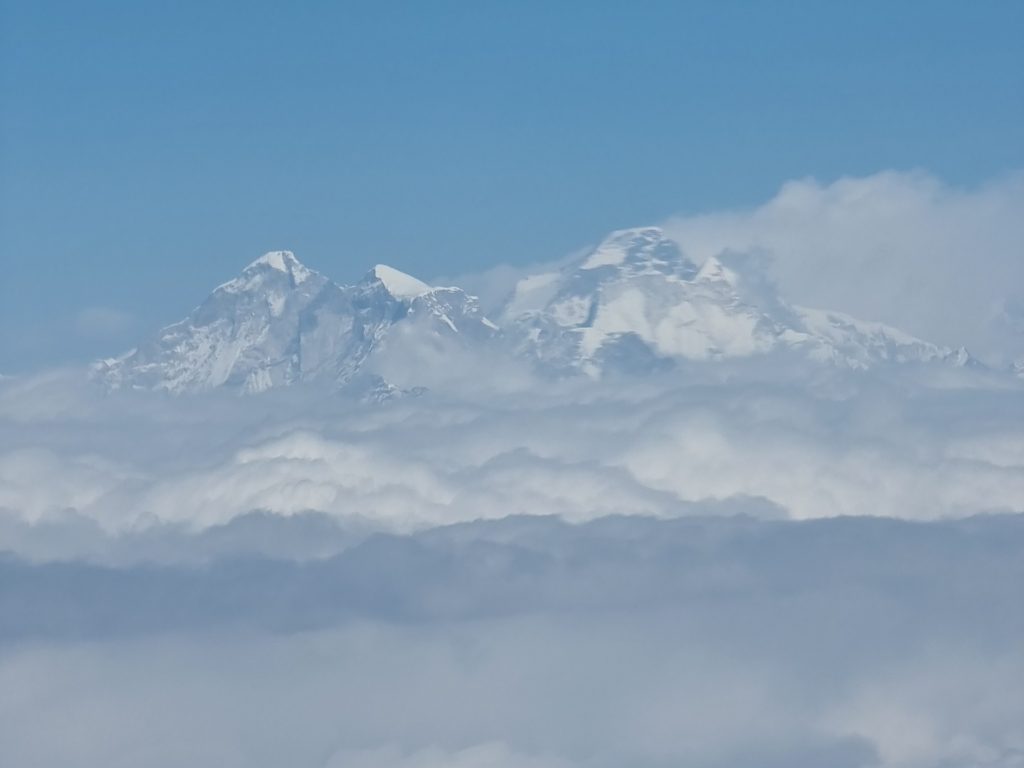
After getting my visa on arrival for $30 and waiting an eternity in the immigration line, I finally entered my 127th country in the early evening. Outside the airport, a driver that my hotel arranged welcomed me with my name on a sign. “We are still waiting for another hotel guest, same flight.” And so I waited again for about 45 minutes outside of the airport. I was tired, it was cold and I did not want to waste time. As a matter of fact, to get from the airport to my hotel as quickly as possible was the only reason why I paid 2 dollars more for the hotel transfer instead of just taking a taxi.
The waiting would have been less annoying, if I had not landed in Nepal already with six hours delay. During my layover in Istanbul, I saw that the flight to Kathmandu would not fly at 1:30am as planned but at 7am. So my first day in Nepal was already ruined. At least, I had to spent layover at Istanbul Airport. It could have been worse. Paris for example. Or, God forbid, Addis Ababa.
My mood was accordingly not the best when I was killing time in Istanbul. One or the other passenger must have noticed that, too. At about five in the morning, I was approached on the terrace next to the gate by an American of Nepalese descent. The guy was still full of energy and babbled incessantly at me, while my responses mostly consisted of just one word with one exception:
Him: “So, what brings you to Nepal?”
Me: “I have this project. I want to visit every country in the world.”
Him: “WOW! Is your project about music??”
Me: “No, I just want to visit every country in the world.”
Him: “Is it about music? Are you a musician??”
Me: “…?!?”
Him: “…???”
Me: “…yes… it is about music…”
I was happy when I could finally get on the plane and I immediately fell asleep when the plane ascended at 7am. Still, it was a pity that I landed at 5pm instead of 11am. I had only 2.5 days for Nepal anyway. And this first half day was already gone.
So, why did I only have 2.5 days for Nepal? For this country, I had to make the following decision. Either I keep my visit rather short or I take myself extensively time for the country and spend 10 to 14 days there. When I was planning a South Asia-trip, Nepal was initially not even part of that trip. I would spend most of my time in Sri Lanka plus three nights in Bangladesh. But when I figured out that two full weeks in these two countries might be a bit too long for my personal taste, I had to fill in three more nights. And thus Nepal came into play again. A short trip to Nepal obviously.
This was not so bad, because I must honestly admit that I had the feeling that Nepal could be a country I would not like. You only hear bad things about the capital Kathmandu and otherwise Nepal is mainly a country for hippies and trekkers. And although I like hiking, there is a catch in Nepal: you need a lot of time for it. The famous hikes all take about two weeks or longer. For me, however, three or four days of hiking are the maximum, after that I lose the desire.
There are shorter treks, but even for these I would have needed probably at least 8-9 days in Nepal considering the transfer days. That’s why, I thought, I would give Nepal a short visit and decide after that, whether I will come back or not…
“In my country no rule!!!” screamed the driver, when he nervously drove us, the other passenger was meanwhile also in the car, through the dark streets of Kathmandu. Anarchy reigns on the streets he probably wanted to express. Kathmandu has the reputation of having terrible traffic and it sometimes takes ages to get from one place to another. No wonder. After all, Kathmandu is one of those cities that was once planned for a few hundred thousand people. Today, five million live there.
I was all the more surprised that the notorious hippie and backpacker district Thamel seemed almost deserted at night. My hotel was also in this quarter, but in a side street a bit away from the action. Whereas, as I said, the action didn’t really exist. Thamel seemed like a ghost town, while I expected to see one of the most chaotic cities ever.
About twelve hours later, a different picture. People, motorcycles and cars. There was a little more life in Thamel. However, even during the day, this neighborhood was not what I had imagined. I expected a city with motorcycles packed streets and alleys, crowds, stray dogs, beggars, bad smells and annoying noise. In other words, a place like Old Delhi. But Thamel was worlds away from that. For me, it seemed more like Southeast Asia. Chaotic yes, but still somewhat pleasant.
In order to get a better impression, check out this short video:
What is even better in Nepal than in Southeast Asia: there are hardly any pushy people. The locals are friendly and leave you alone if you want. I have also not experienced a single rip-off in my time. Perhaps also because a large part of the Nepalese economy is geared towards tourism and the people know how to deal with their guests.
The sad truth is that Nepal is one of the poorest countries in Asia. The country does not export much. The ocean is too far away for shipping, and air travel is severely hampered by the mountains. Remittances from Nepalese living abroad account for about 30% of GDP, which is never flattering for the local economy. But as much as Nepal is disadvantaged by its geographic location, it also offers advantages precisely in tourism.
Trekkers make up a large part of Nepal’s tourists. Nepal is a paradise for trekkers. I mean, could you imagine a more perfect place for trekking than the Himalayas? There is also a second main group. In the past, they would have been called hippies. Today, they are basically alternative people who like to get high and look for a break from Western performance society. The fact that Nepal has a rather liberal approach to drugs and that you can find many like-minded people in the country attracts a lot of such individuals to the country. There were dozens of people on my plane who would fit this description.
However, Nepal’s tourism still suffers from the pandemic. The country reopened its borders only in September and since then not many people arrived. And you could see that on the streets as well. Anyway, January is Nepal’s coldest month and not maybe more tourists come when peak season starts in March.
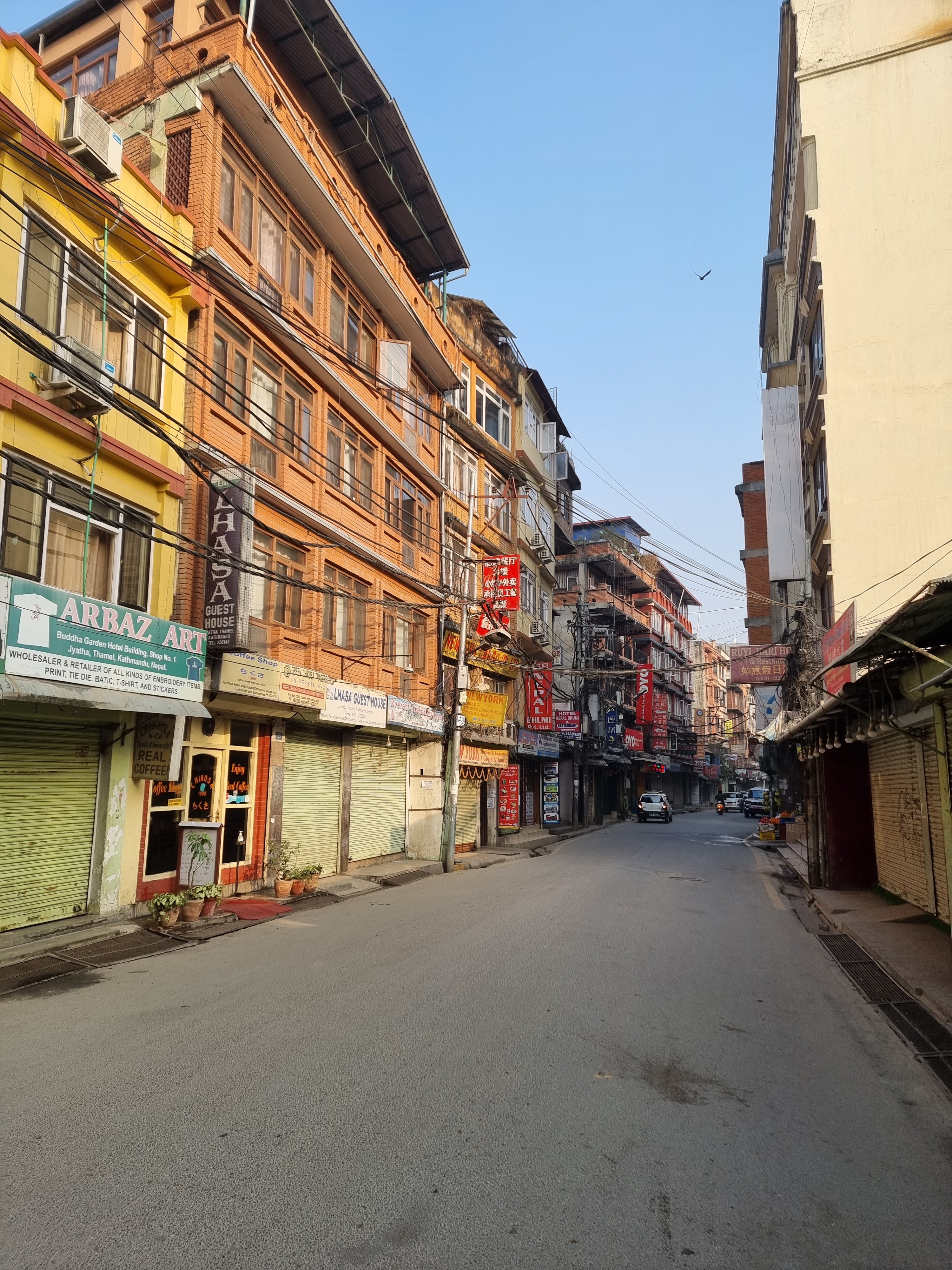
“And what peak are you doing in Nepal?” a friend wrote to me. “My hotel room is on the fourth floor and there is no elevator. I walk up and down several times a day. That’s my peak,” was my reply. As I mentioned earlier, I didn’t want to take the time to hike. Instead, I wanted to dedicate one afternoon to Kathmandu and leave the city on the other two days. But since the first afternoon was already gone, I decided to spend one day in Kathmandu and do a day-trip the next day.
The Kathmandu Valley is a UNESCO World Heritage Site, which includes seven groups of buildings and monuments. Four of them are in Kathmandu itself and three others in the neighboring towns of Patan and Bhaktapur. However, at least in Patan the bordering line to Kathmandu is somehow unclear. I hired a guide and driver for both days. It cost $70. For Nepal certainly not a bargain, although it was worth it to me. Especially with my delay, I wanted to lose as little time as possible and see the sights in the most efficient way.
On the first day we visited five of these UNESCO World Heritage Sites: Durbar Square in Kathmandu and Patan, Swayambhunath also known as the Monkey Temple, the Hindu temple Pashupatinath and Boudha Stupa. All of these sights were absolutely world class and a must see when in Nepal.
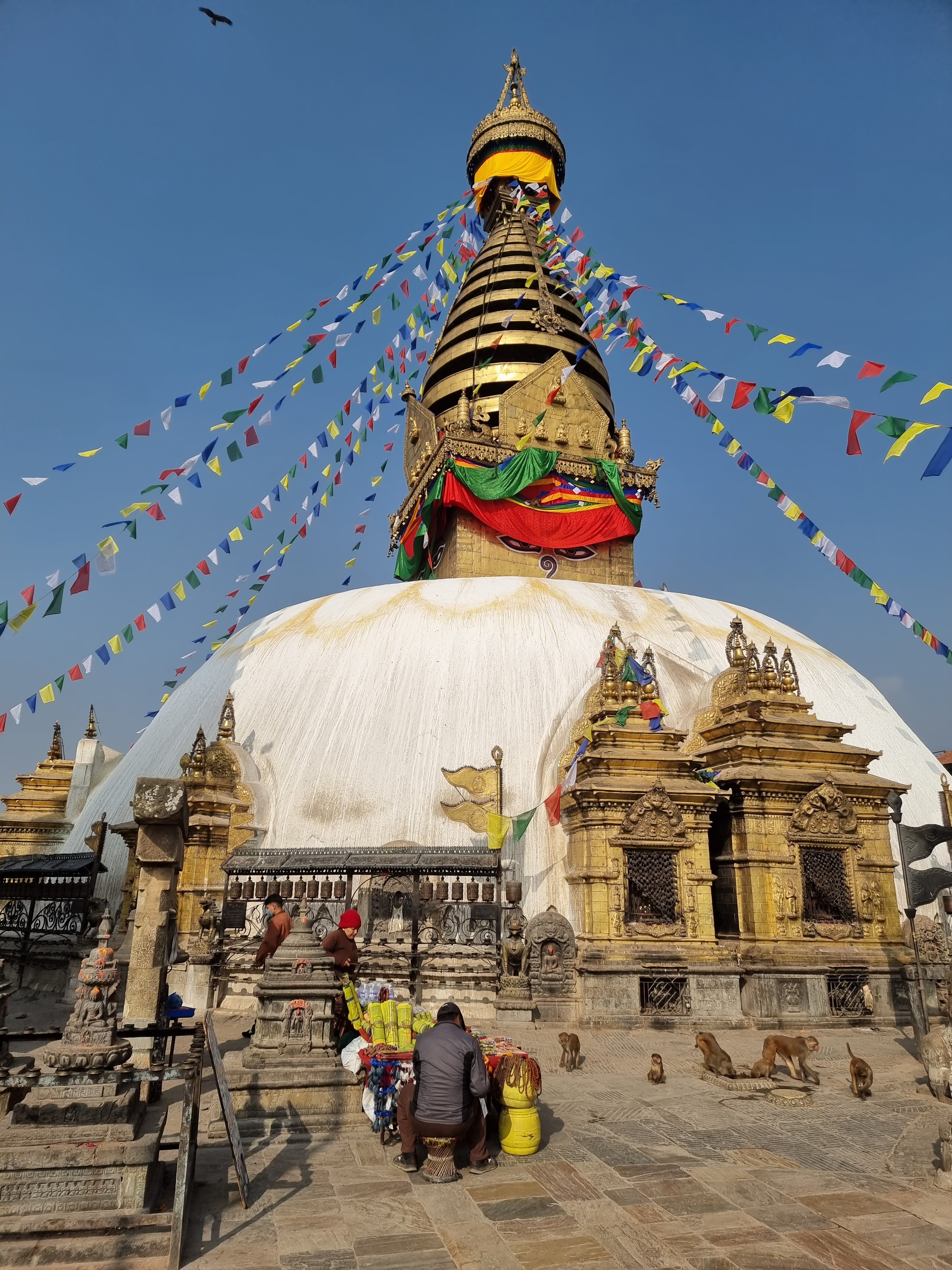
The earthquake in 2015 severely devastated some of these world heritage sites. They have been restored in the mean time so that – at least I – could not have concluded that a natural disaster had occurred here a few years ago.
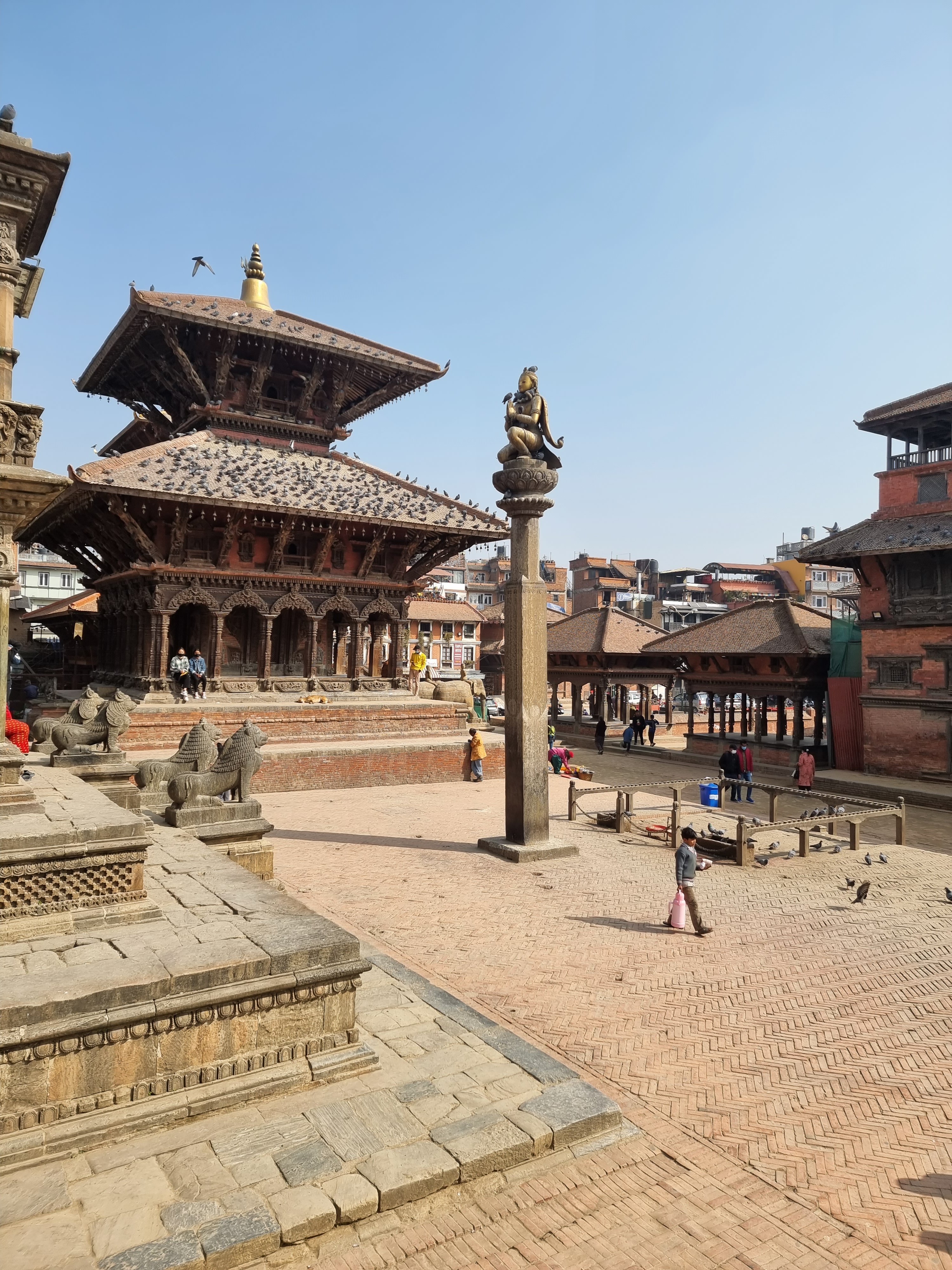
Kathmandu has thanks to the sights a somehow spiritual vibe. Although two of the UNESCO sites are important Buddhist monuments, 81% of Nepal’s population is Hindu. Buddhists make 9% and Muslims 4%.
I also had a “spiritual encounter” at Pashupatinath, where I saw two Sadhus. The gentlemen waved at me and since I have seen pictures of Nepalese Sadhus, I asked for a typical tourist photo.
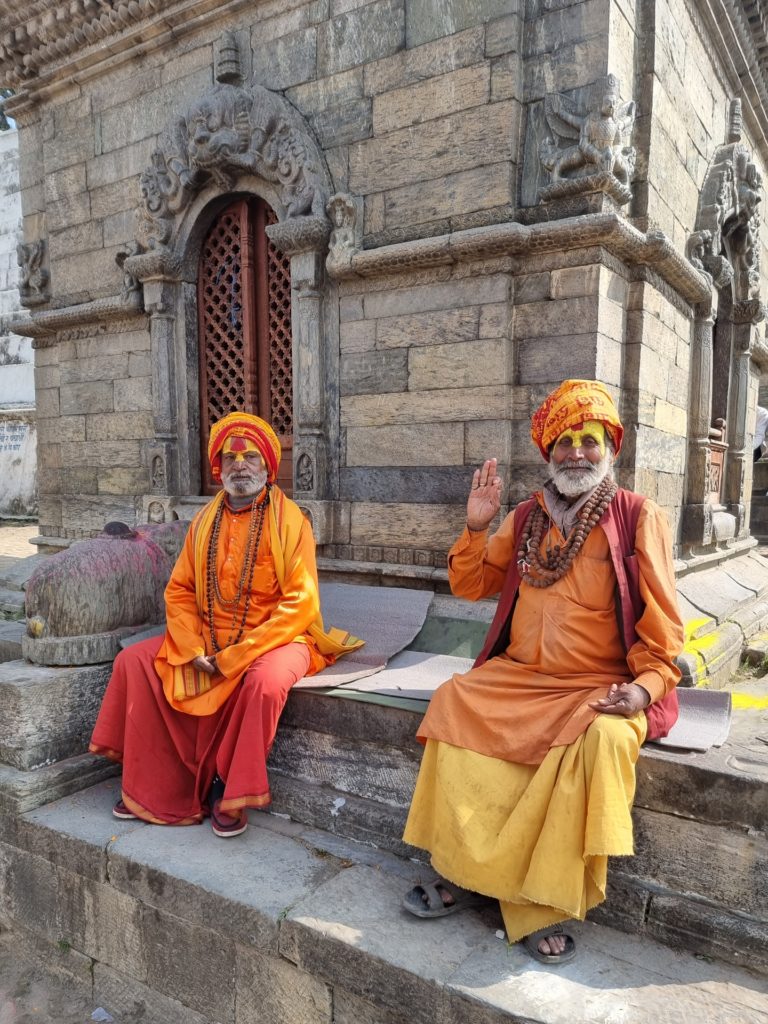
When I sat down next two the two Sadhus, I expected to get some kind of blessing. Or at least some spiritual words.
However, all I heard was the guy to my right whispering “10 dollars!” into my ear.
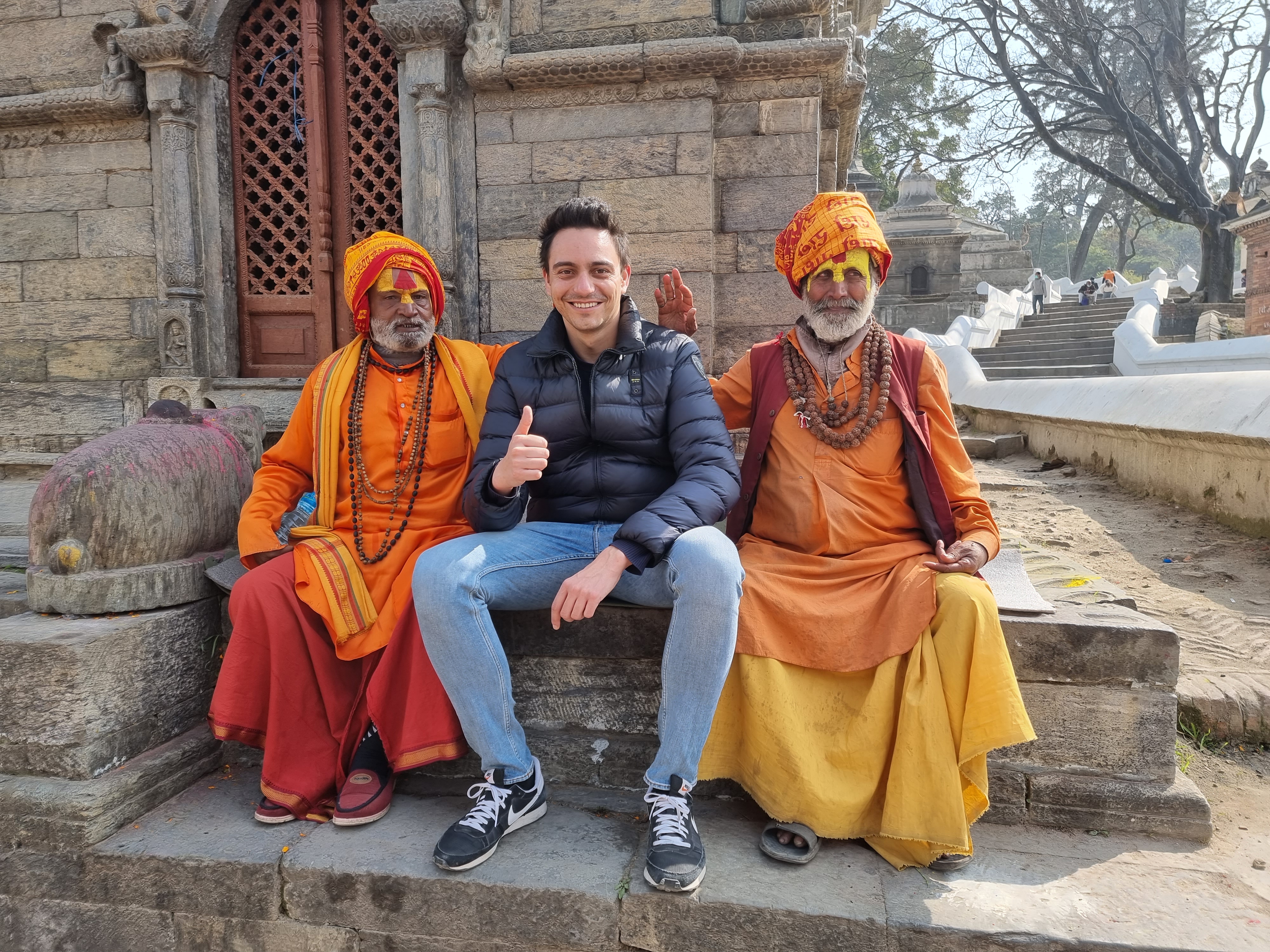
My guide advised me to give them 100 rupees to share, which is about 80 cents. “You better take the picture first and then talk about money,” he said. Later I learned that other travelers indeed pay them $10 sometimes to get the picture. Nevertheless, my guide confirmed that they were real Sadhus and not just beggars dressed as religious people as I suspected.
Funnily enough, the tour was over after only four hours. The reason for that was a restriction related to the pandemic. In Nepal there is the so-called odd-even rule. This means that one day only vehicles with even numbers are allowed on the road. The next day, only vehicles with odd numbers can hit the road.
The idea is to motivate people to stay at home, although I doubt that this goal is achieved. People will just leave their home without their vehicle. However, it reduces the traffic by 50% and there was no traffic jam in a city that is actually famous for it. This odd-even rule was certainly also a reason why Kathmandu seemed much less chaotic than expected.
Anyway, I spent about 30-45 minutes at each UNESCO site and think that’s the realistic amount of time you should consider when visiting them. Driving from one sight to another took in most cases 20-30 minutes. In normal times, it is probably rather 45-60 minutes.
We left Kathmandu the next day and drove one hour to Nagarkot, where you have a good view of the Himalayas in the morning when the sky is clear. If you are lucky, you can even see Mount Everest, which unfortunately was not the case for me.
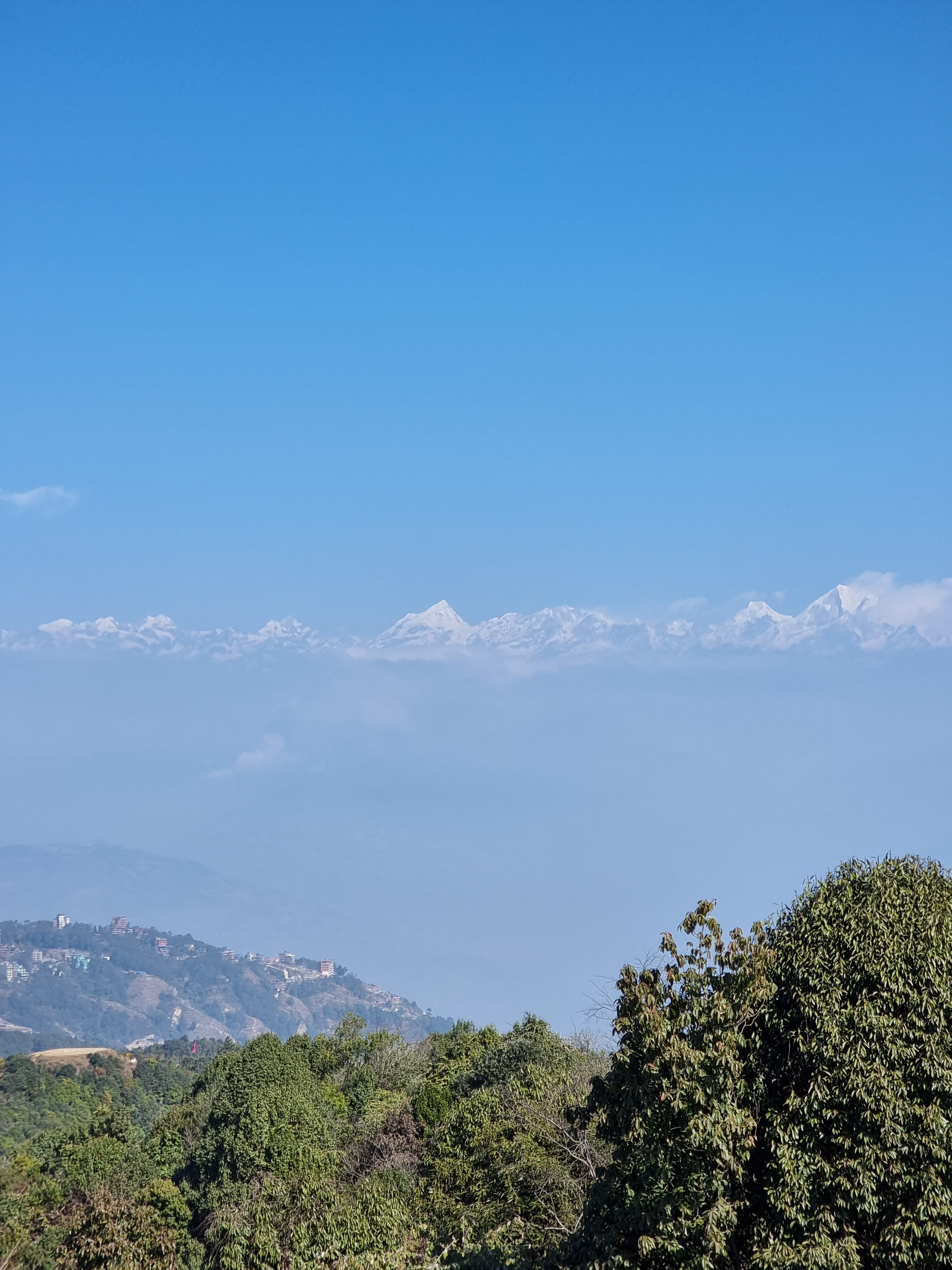
In general, I found Nagarkot quite okay, although you can skip this trip if you have little time. You don’t have a much better view of the Himalayas than from the plane while landing or departing. Nevertheless, if you go make sure that you make a quick stop at the Mystic Mountain Hotel. There you can get a superb view…
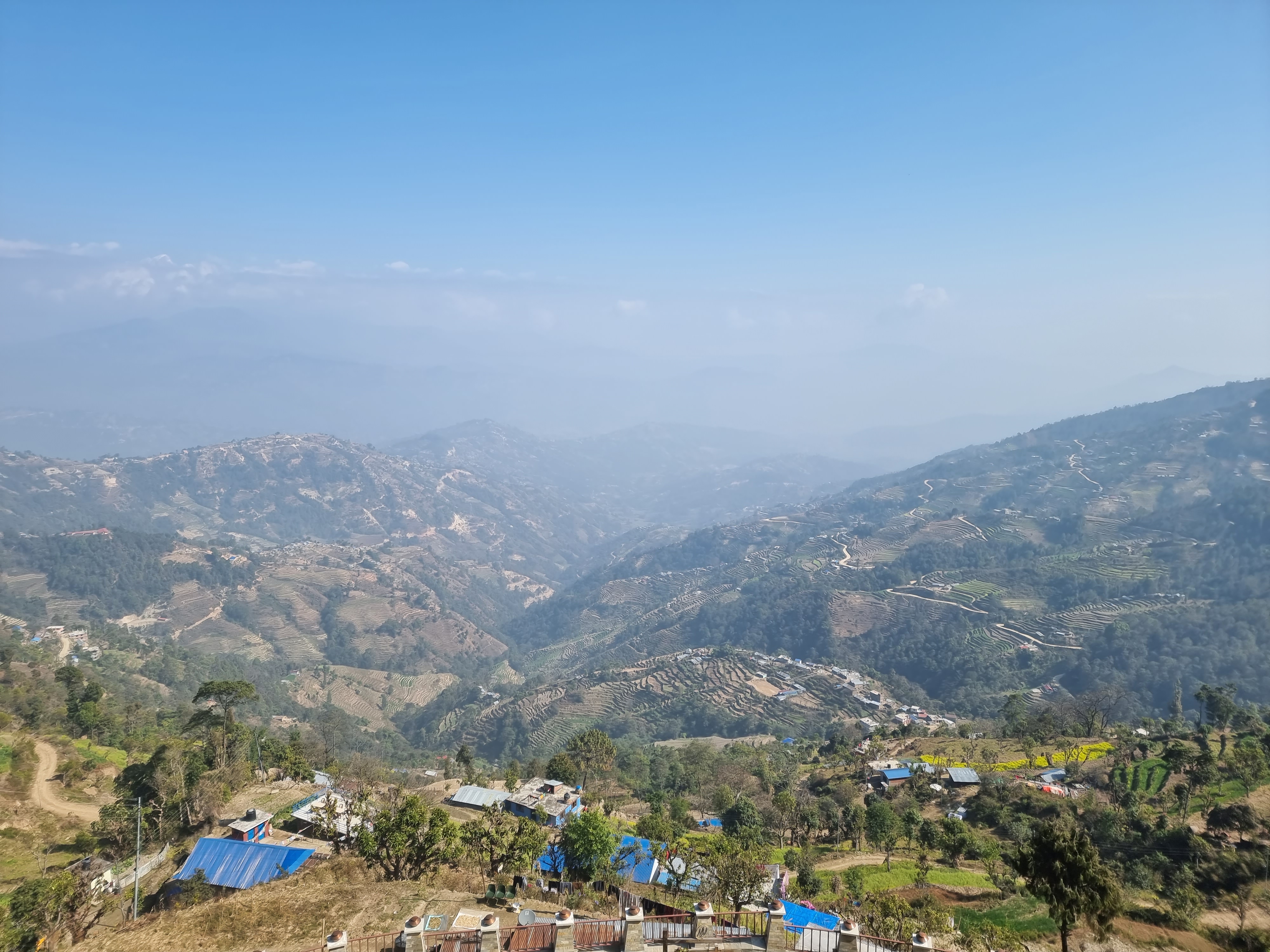
We then spent the afternoon in Bhaktapur, where we visited the last two world heritage sites in the Kathmandu Valley. Bhaktapur is definitely worthwhile and I liked it almost best of all three cities (Kathmandu, Patan, Bhaktapur).
By the way, the entrance fees to the sights might seem a bit steep. Especially, if you consider the general price level in Nepal. For Bhaktapur’s Durbar Square I paid 1500 rupees, which is a little more than 12 dollars, but since it is a public place for which tourists pay a price, it was also no bargain. For a poor country like Nepal, however, such revenues are enormously important, so I was happy to pay that.
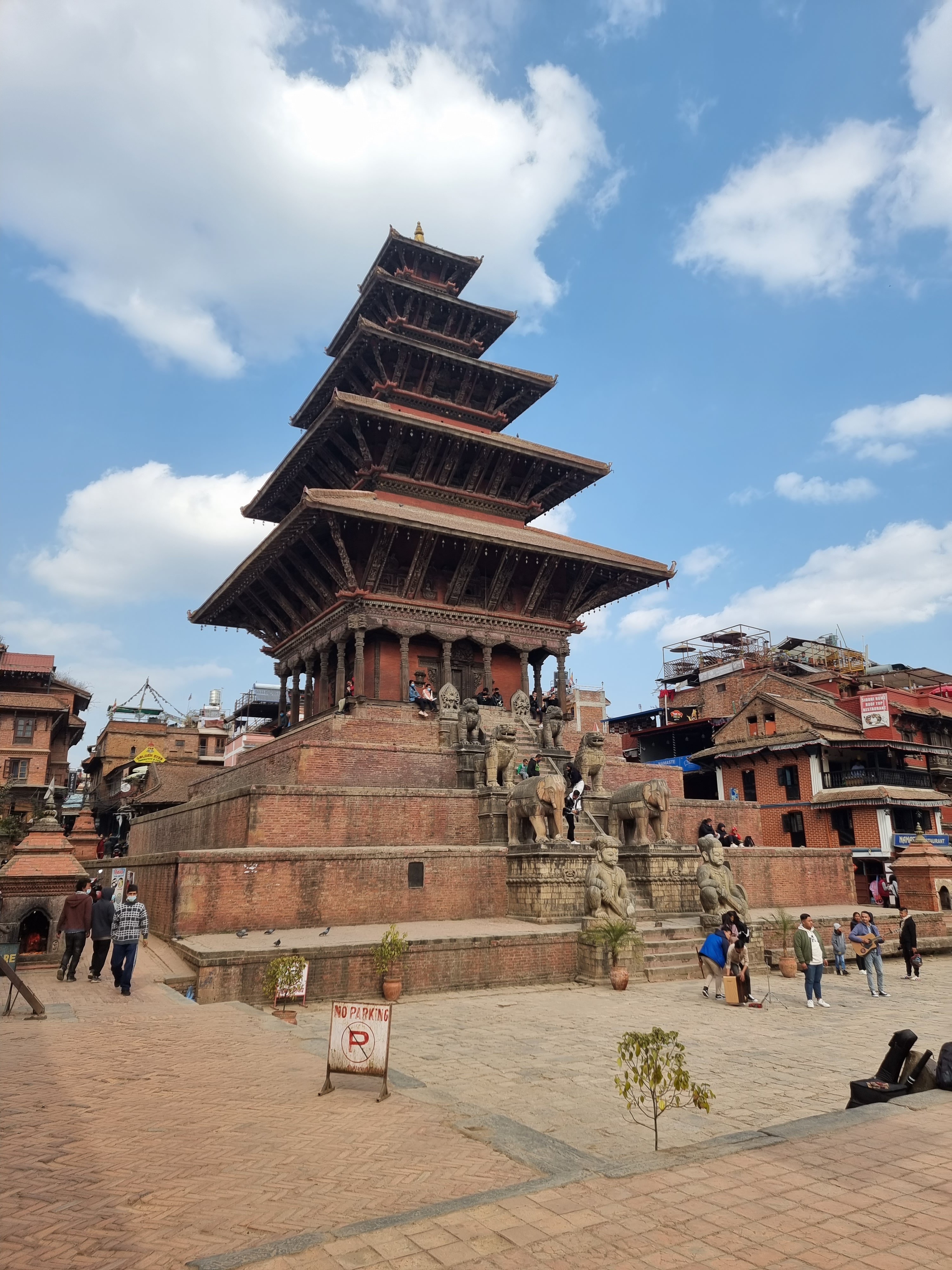
This tour was also already over around 15:00. So I spent the remaining hours of the afternoon in Thamel, where I visited among other things the Garden of Dreams (not worth it). Anyway, I was not unhappy that my days were not too rushed. I actually enjoyed it that I still had enough time to stroll around in the afternoon and drink a coffee every now and then.
After my third night, my Nepal trip was already over and I have to say that I surprisingly liked Kathmandu. This was certainly due to my rather low expectations. I have heard from so many people how terrible Kathmandu is and often the city is called the filthy capital of a beautiful country. Sure, Kathmandu is not a beauty. Under normal circumstances, the city would probably have been even more hectic and chaotic. I found it quite pleasant, though, and I was thrilled by the sights, which is actually rare after having visited 127 countries. I also found the people friendly and the food was absolutely great.
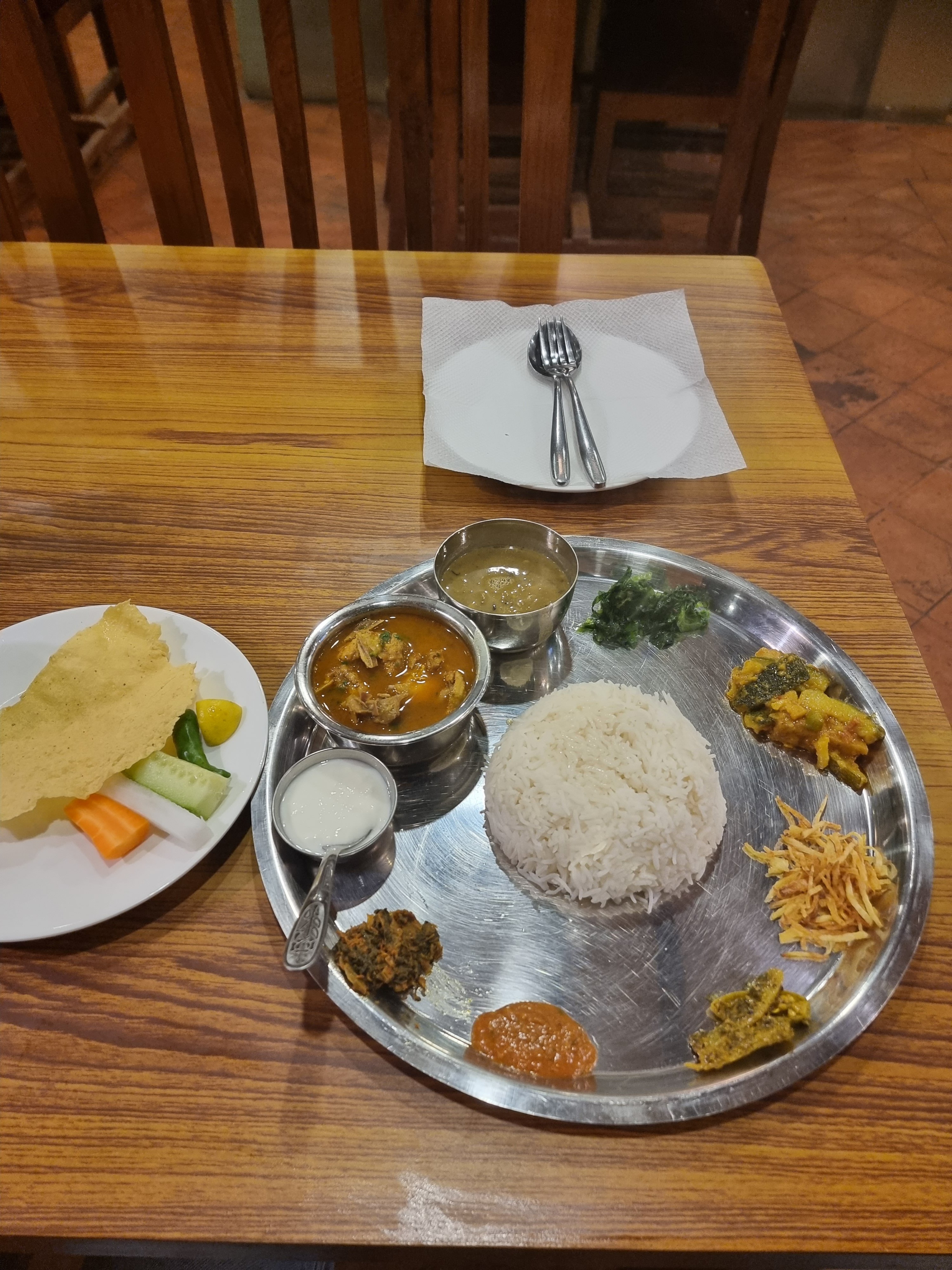
By the way, despite its geographic proximity to India and China, I found Nepal almost more similar to Southeast Asia than either of those countries. I saw little to no influences from China in particular. The Indian influences cannot be denied, though Nepal is still different. Just, maybe like a bit of a mixture of Southeast Asia and India. In any case, I liked it.
Still, it was okay for me to move on after three nights. I saw everything I wanted to see and honestly wouldn’t have known what to do with another day in Kathmandu. In my short time, I still managed to see six of Lonely Planet’s top 15 in Nepal. Furthermore, I did almost the same route, which is shown in Lonely Planet as a 1-week itinerary, in two days. So I got the maximum out of my short time.
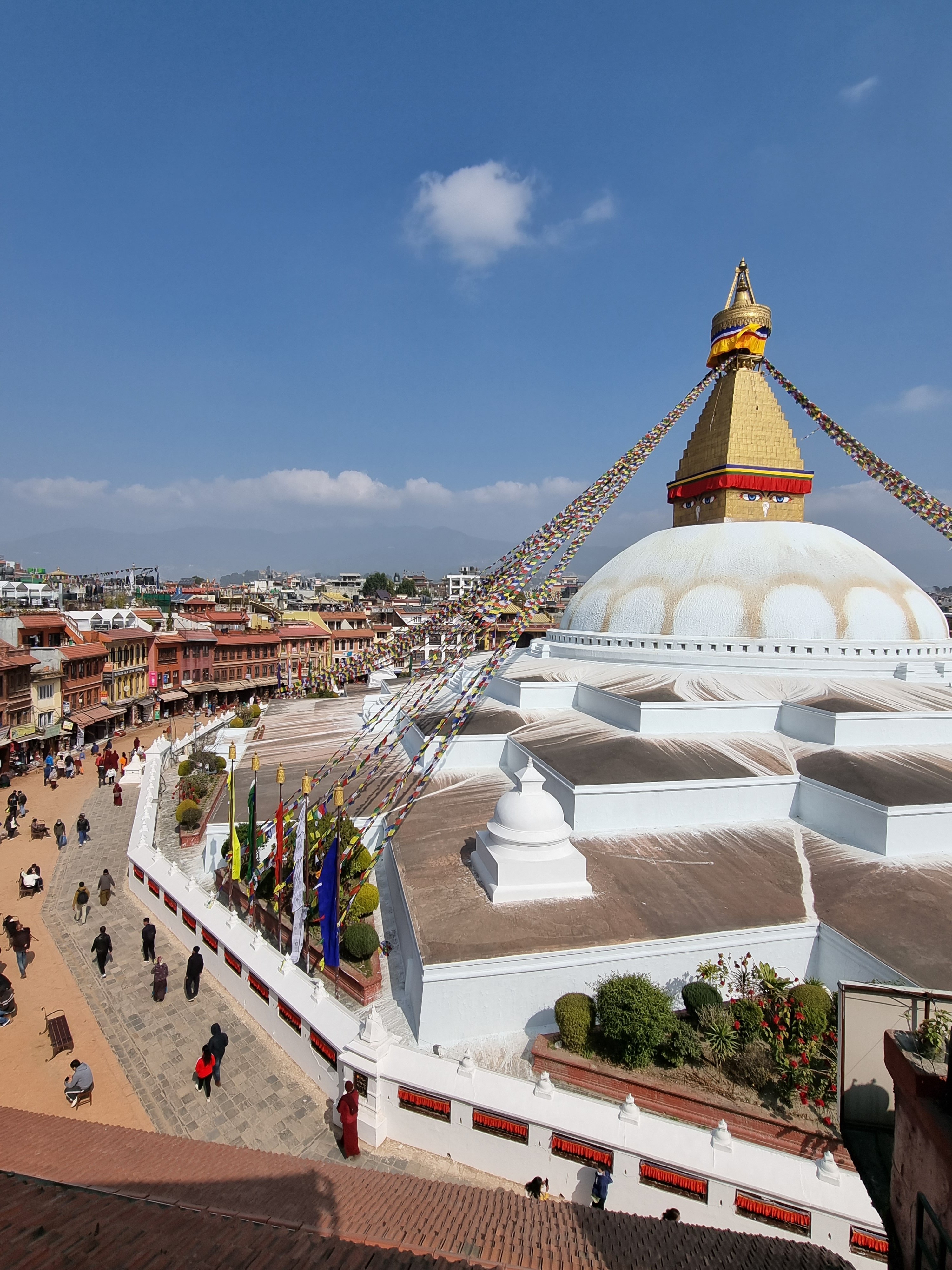
Nevertheless, my short stay left me wanting more. These three nights in Nepal gave me a first impression and someday I will come back and spend more time in this beautiful country. Then I will hopefully also make it to the Himalayas. And even if it is not enough, there is still the Chitwan National Park and idyllic Pokhara, which I would like to see as well. Oh, and by the way, if you are looking for a good guide, you may contact Kapil (+977 985 103 65 90, aimnepaladventure@gmail.com).
In conclusion, sometimes it’s not bad to go somewhere with low expectations. The discrepancy between your expectations and your actual experience leads in the end to the judgment whether you liked a place or not. This worked very well for Nepal.
And with my next country Bangladesh? There, the expectations were even significantly lower. If you wanna read how my 128th country was, check out my trip report about Bangladesh.
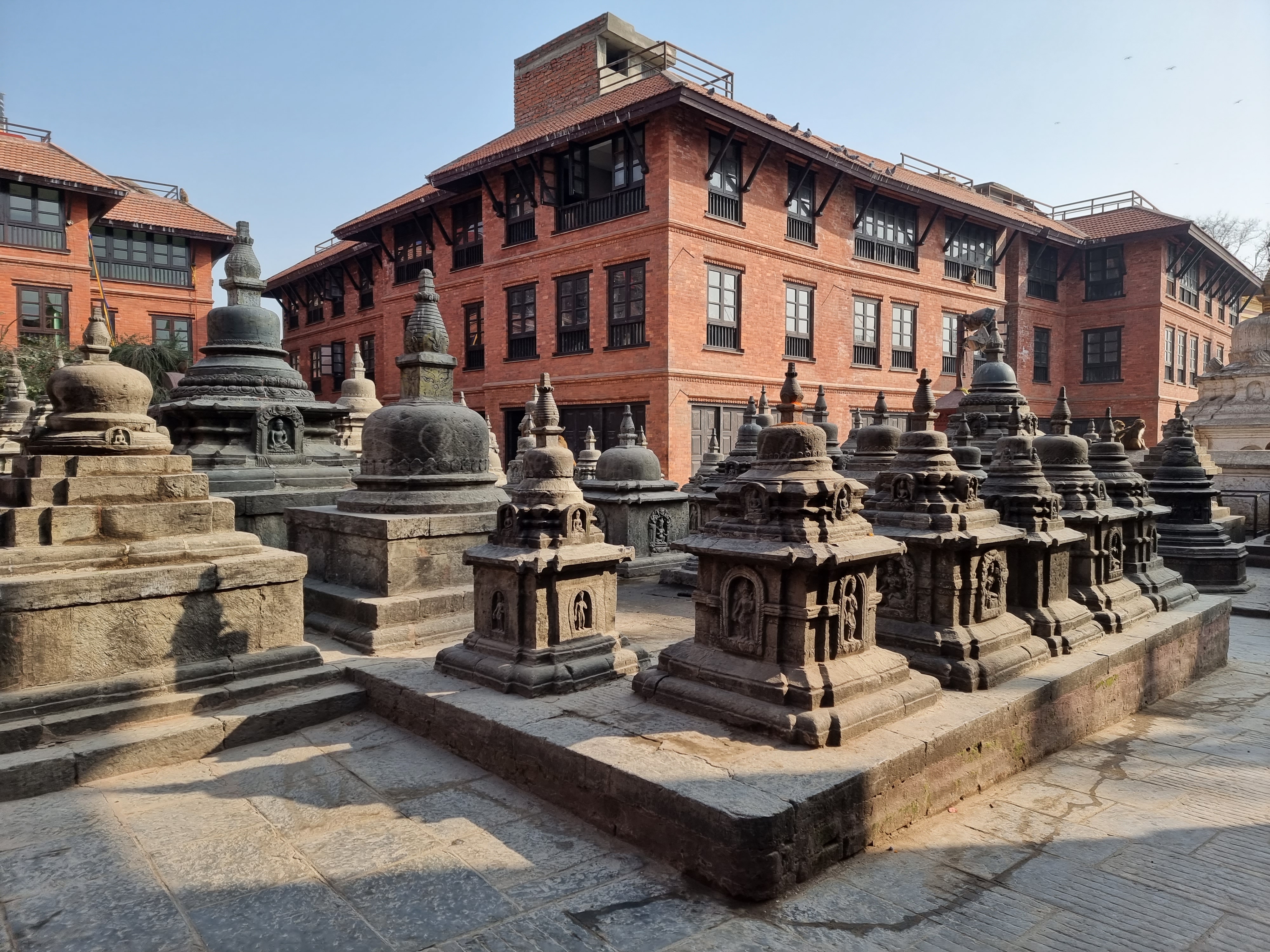
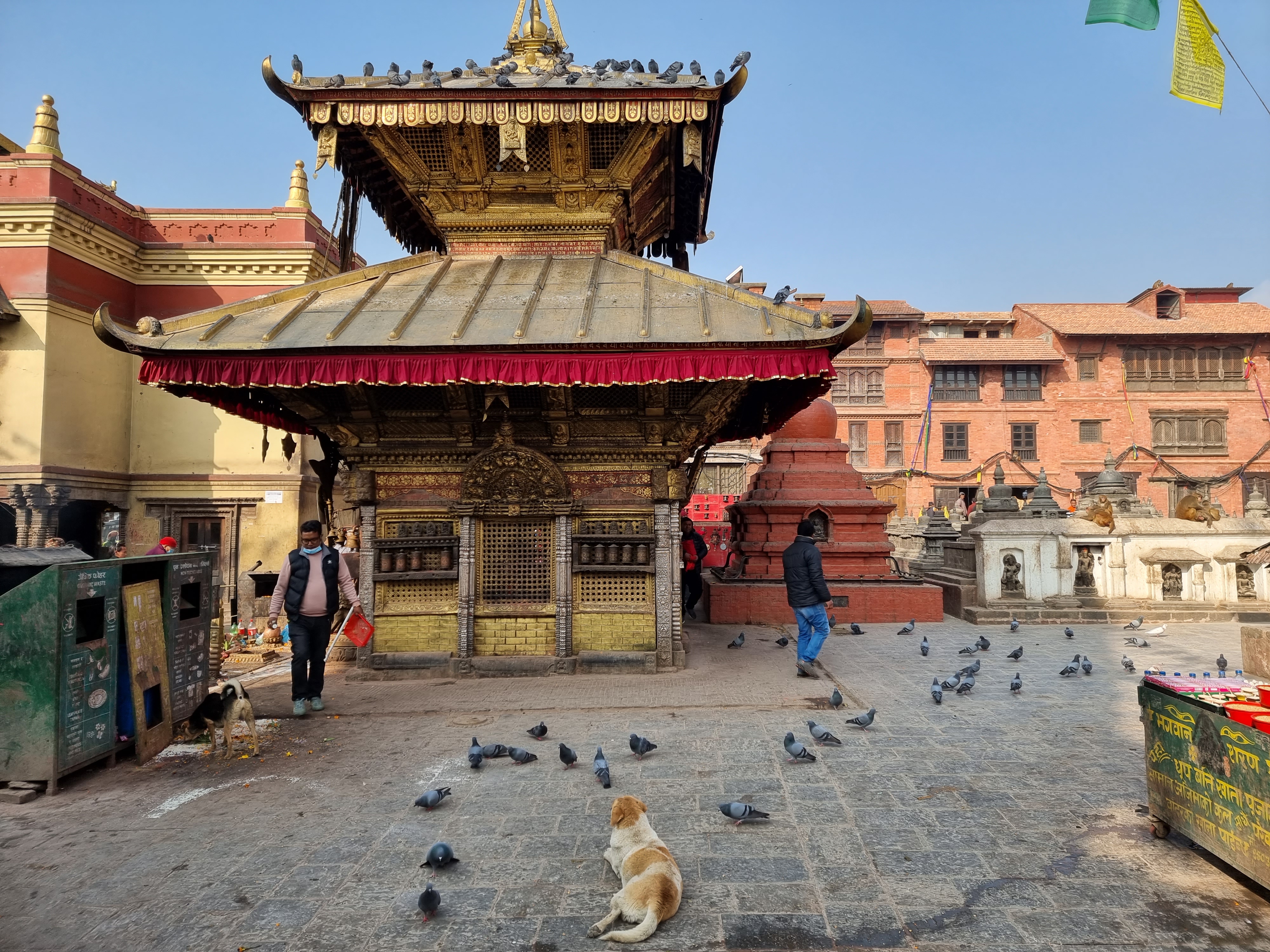
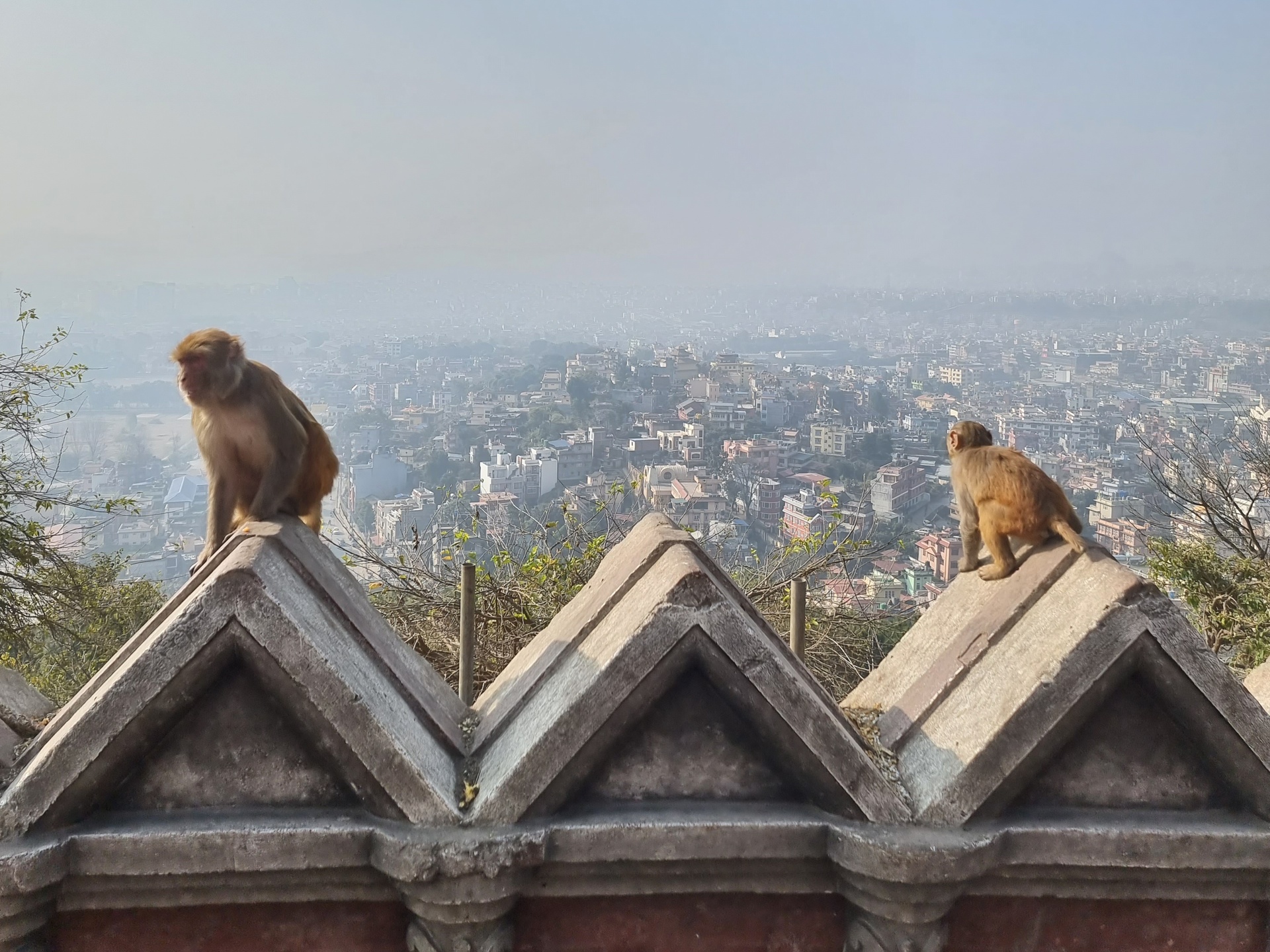
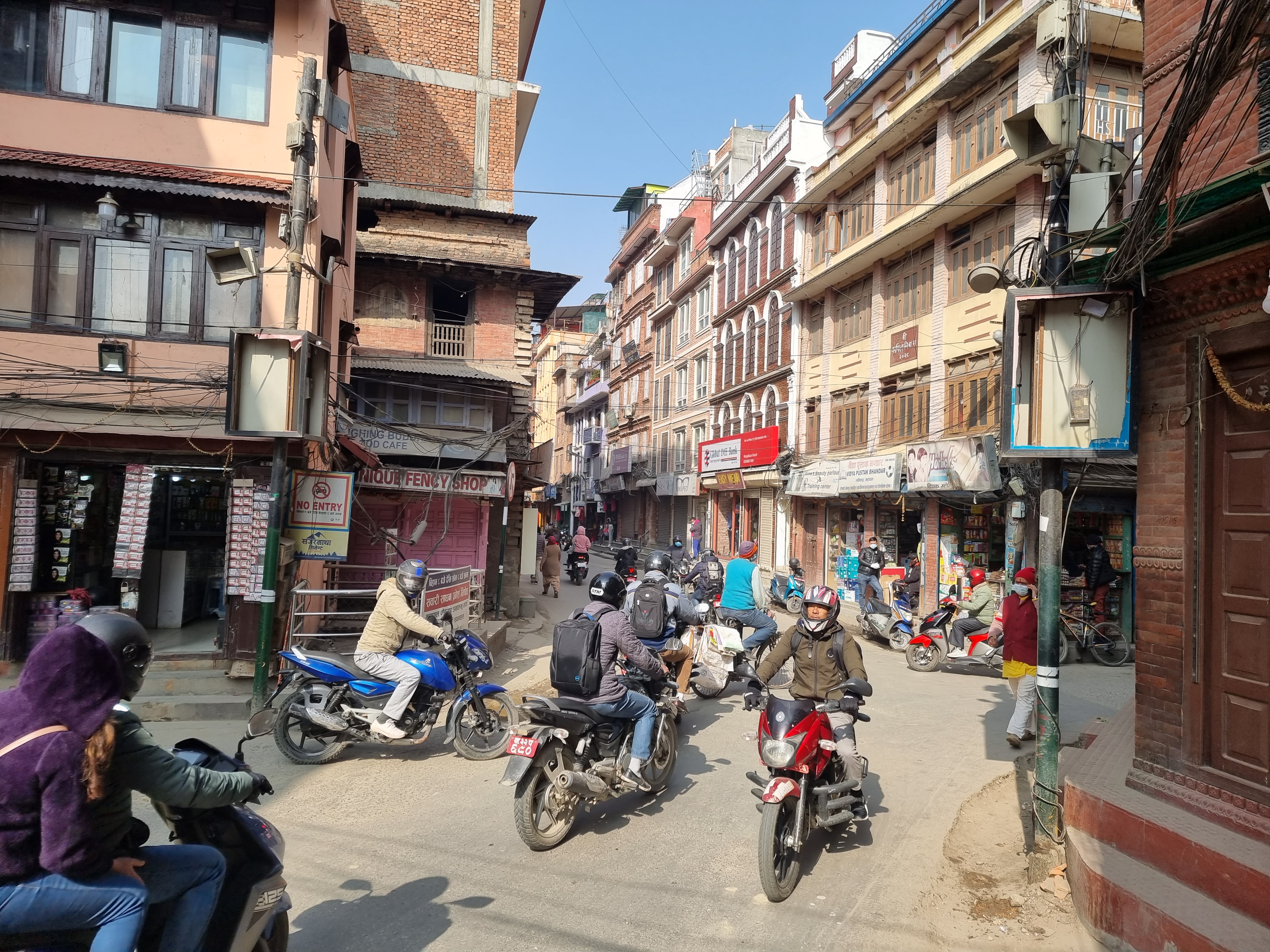
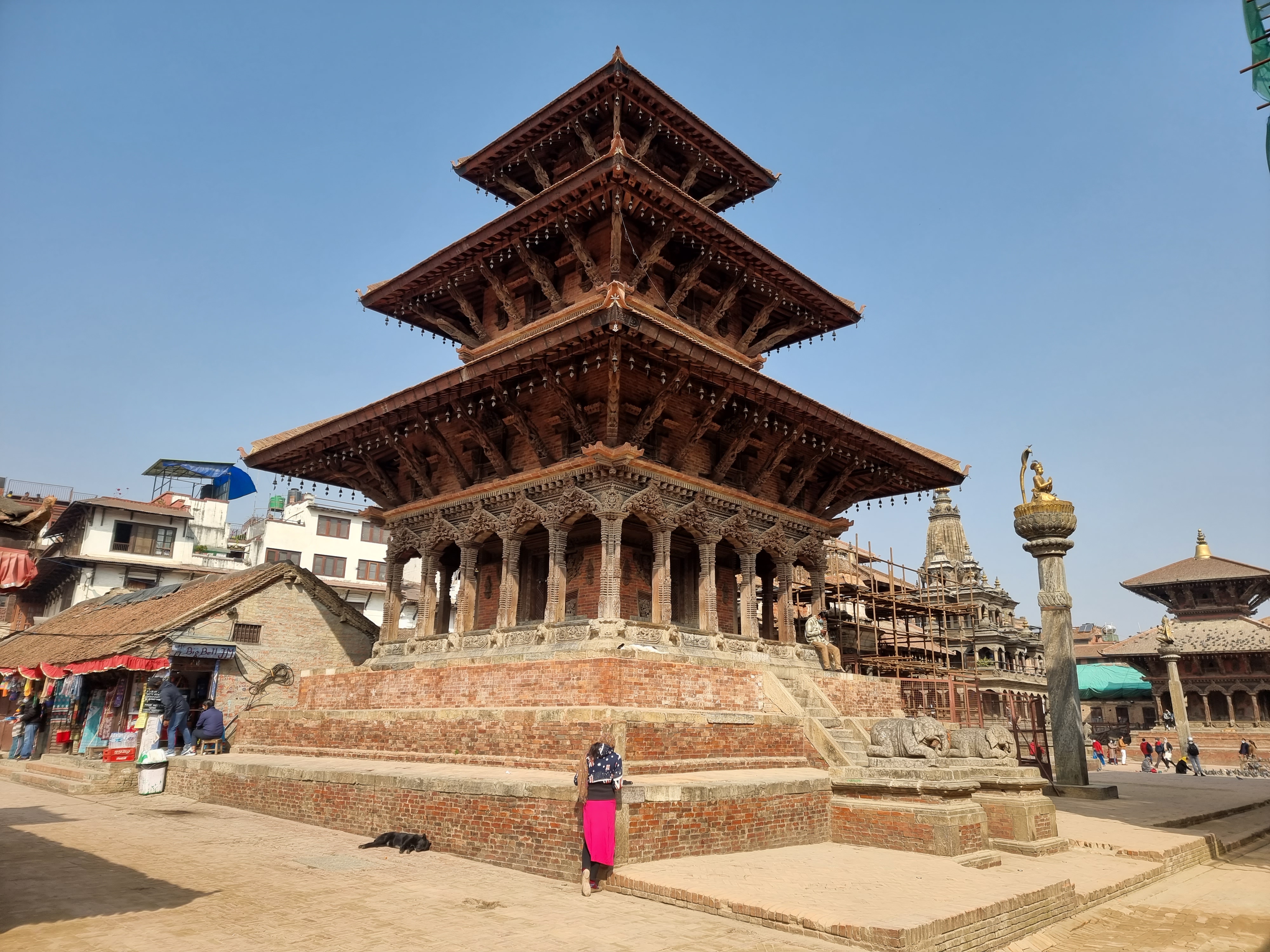
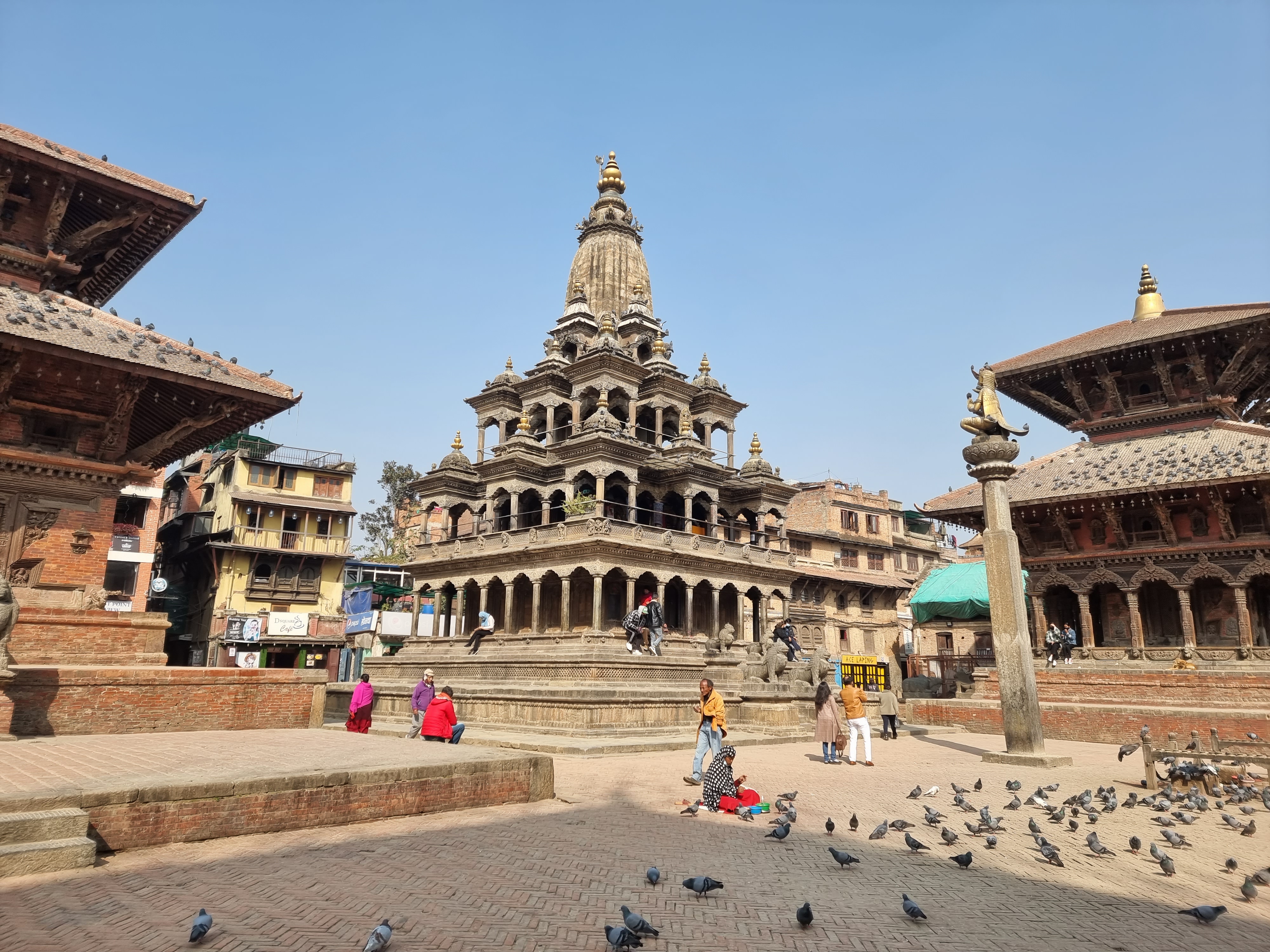
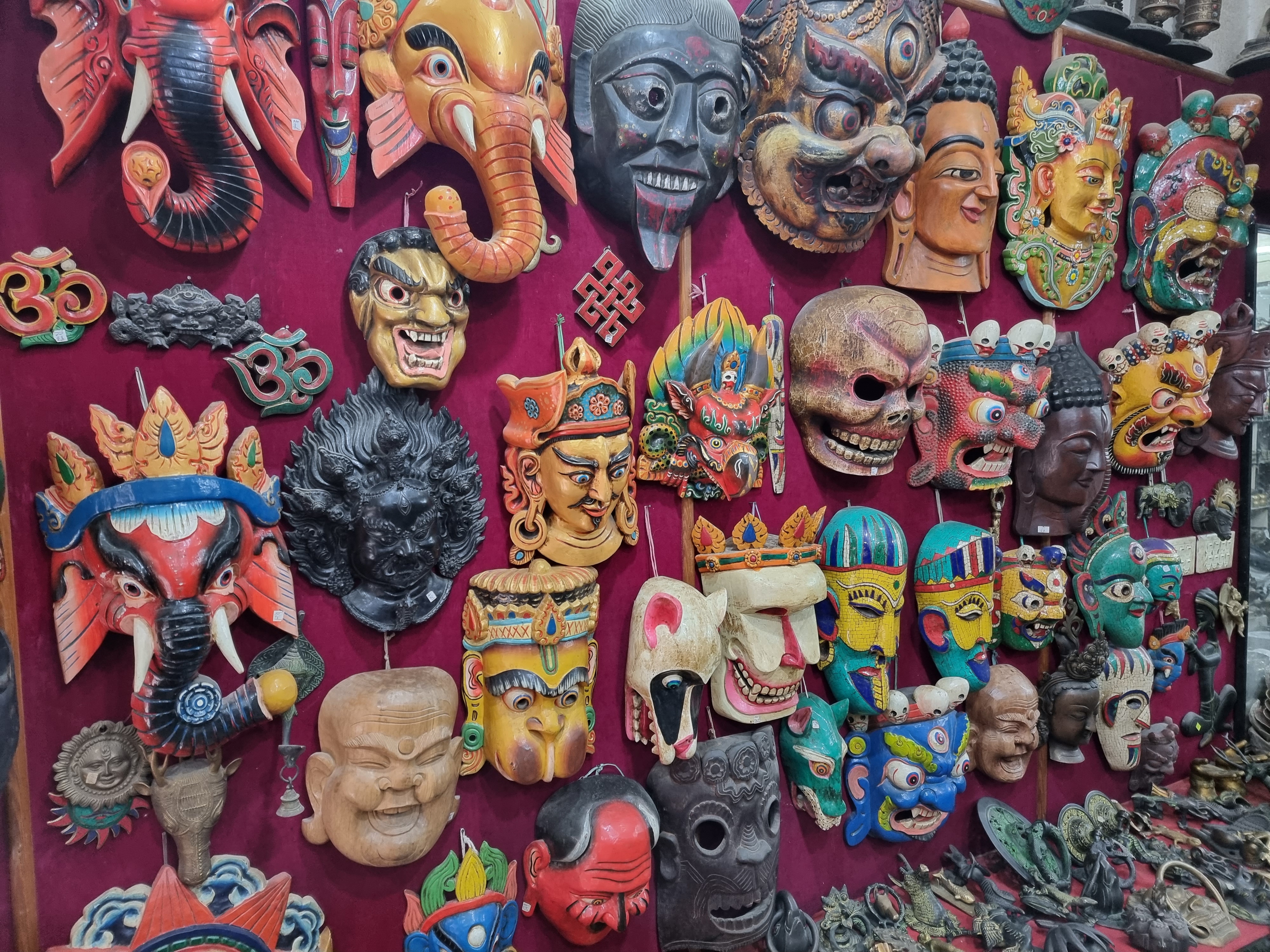
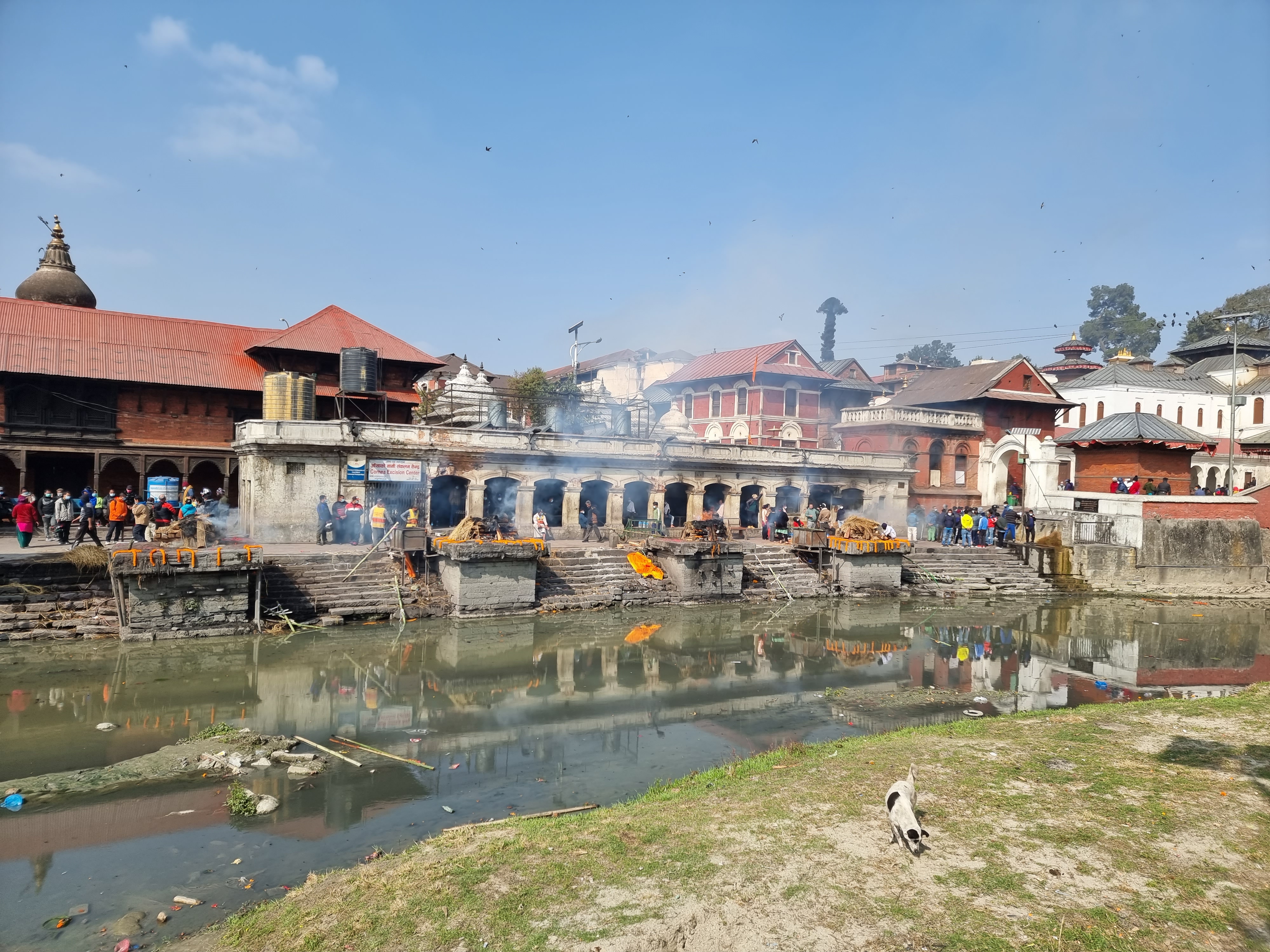
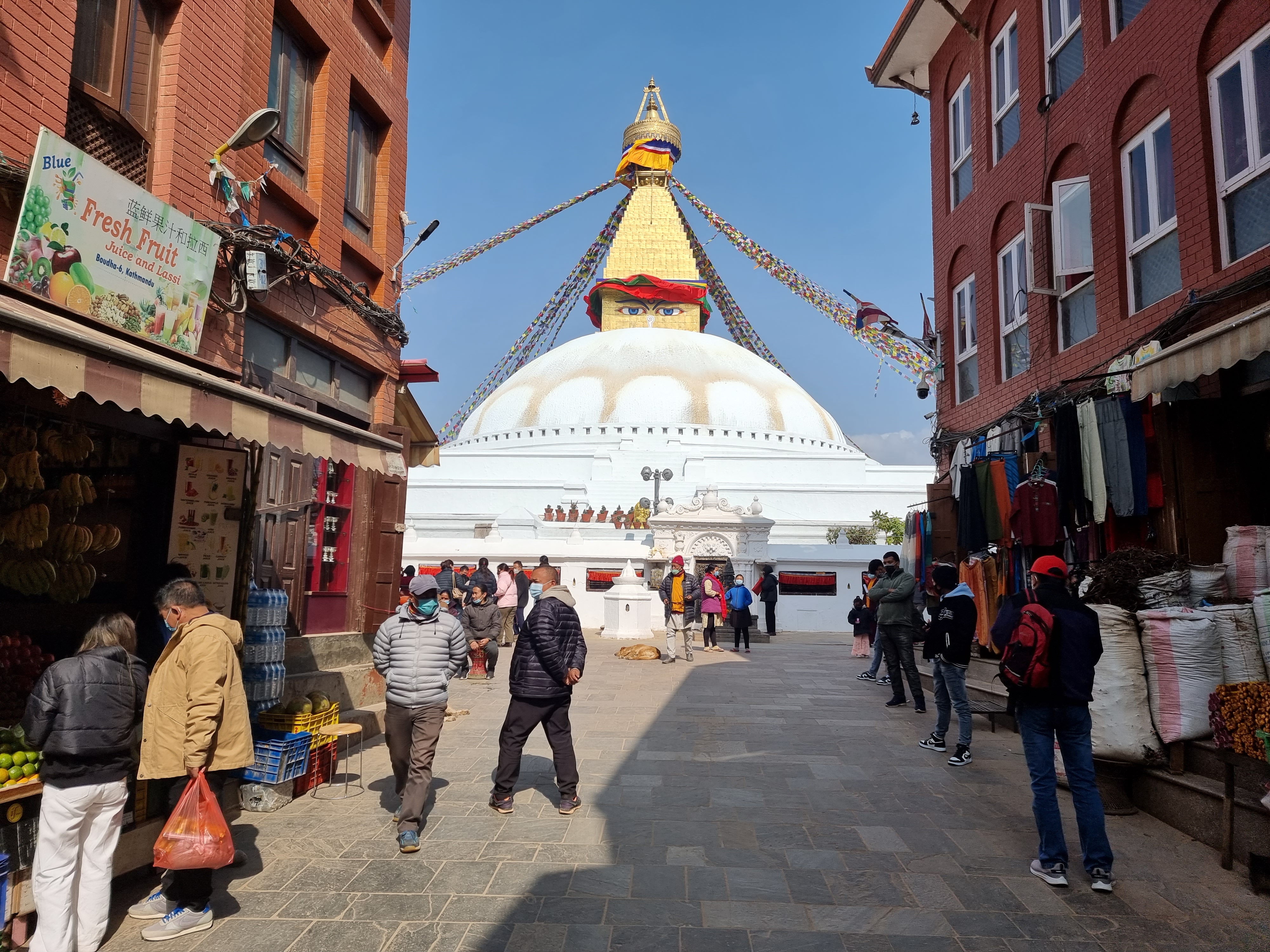
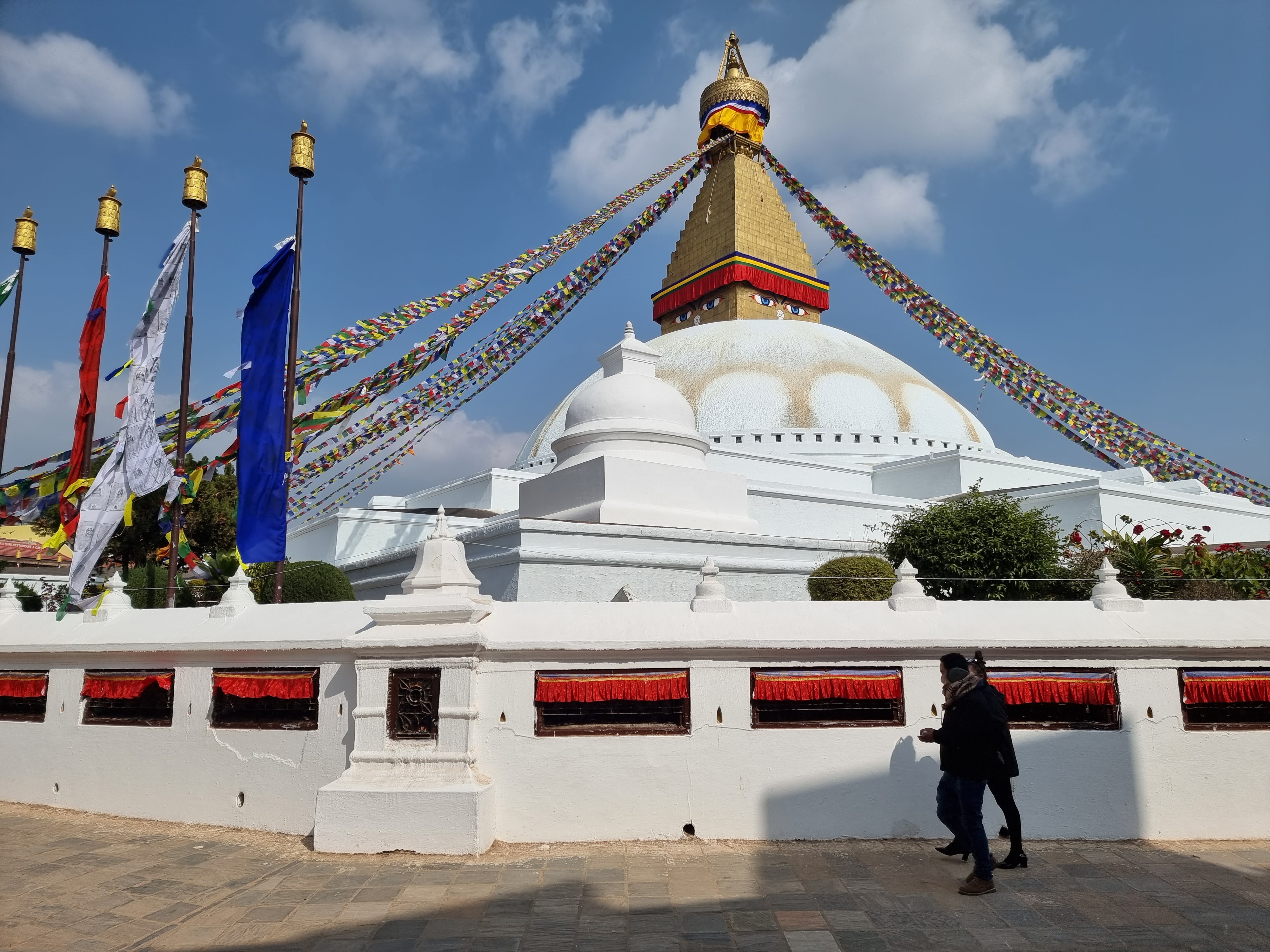
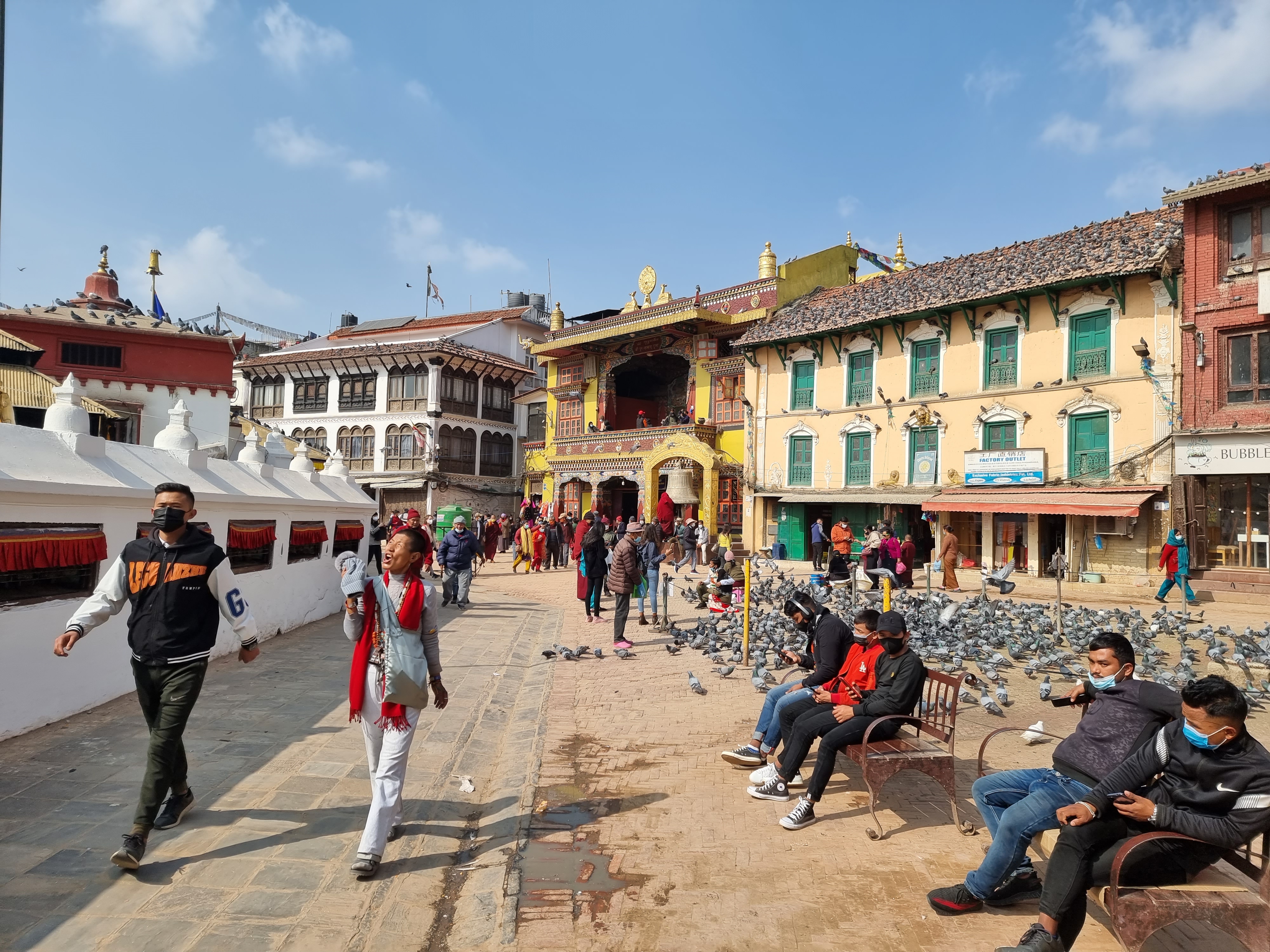
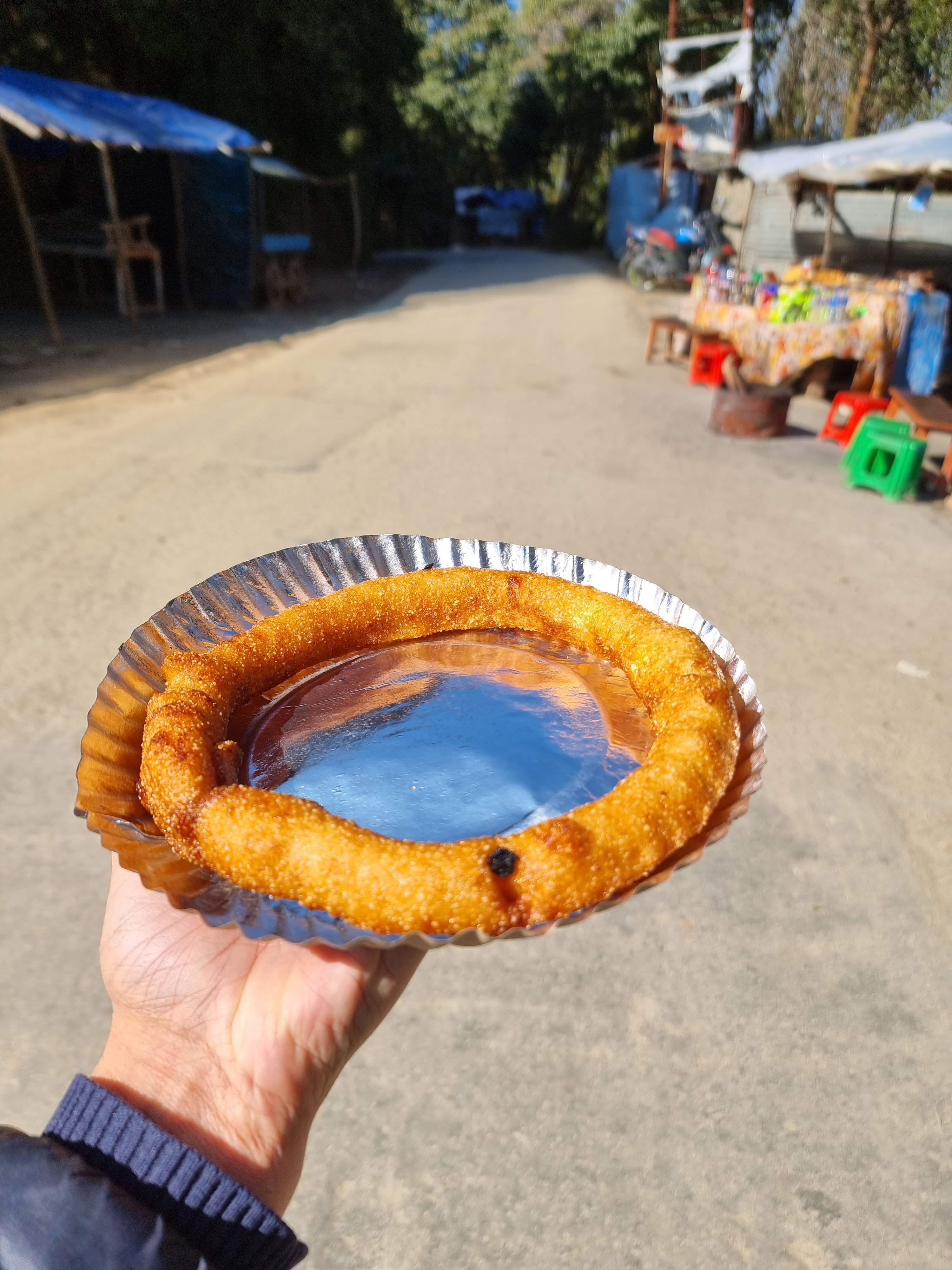
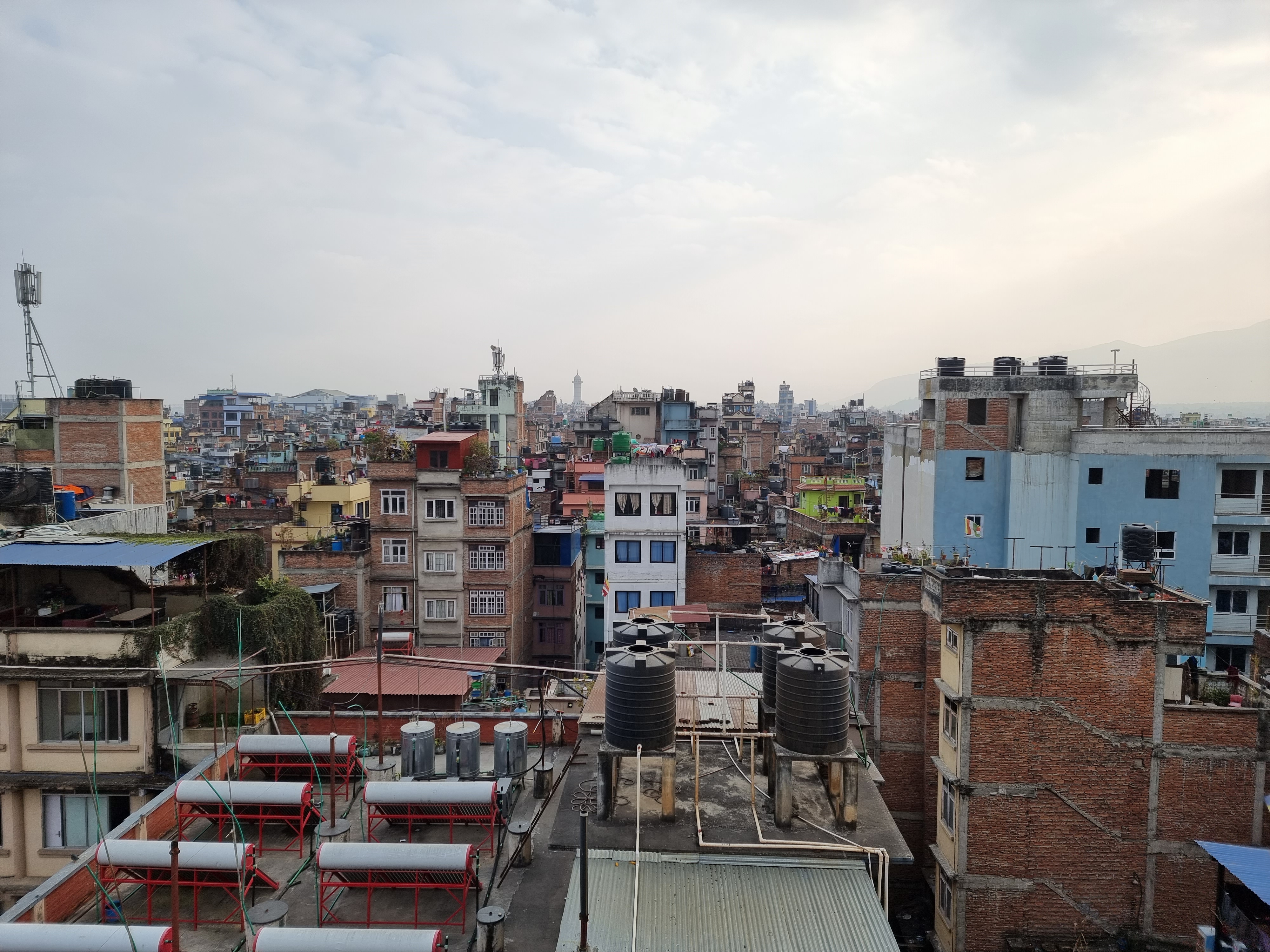
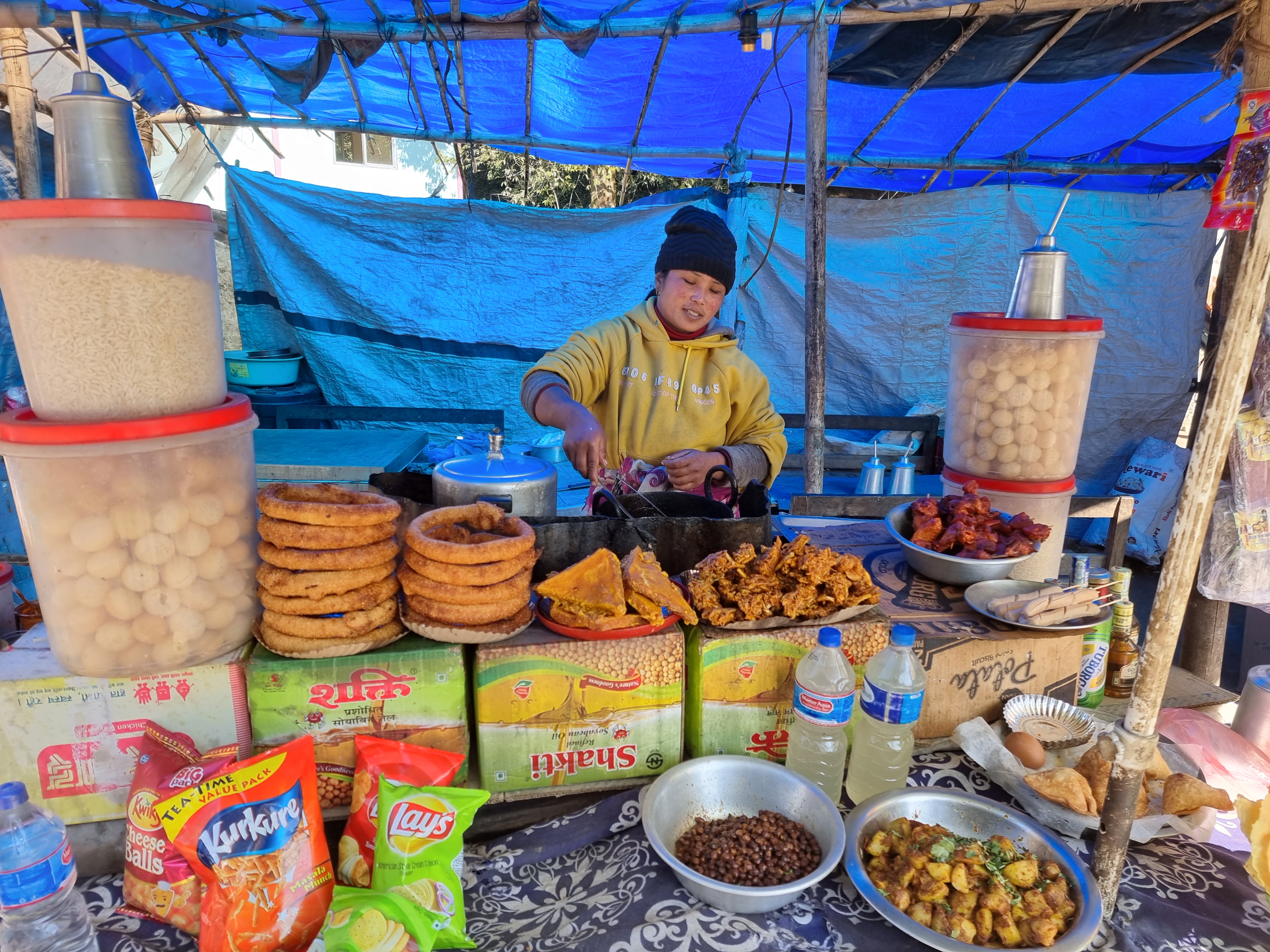
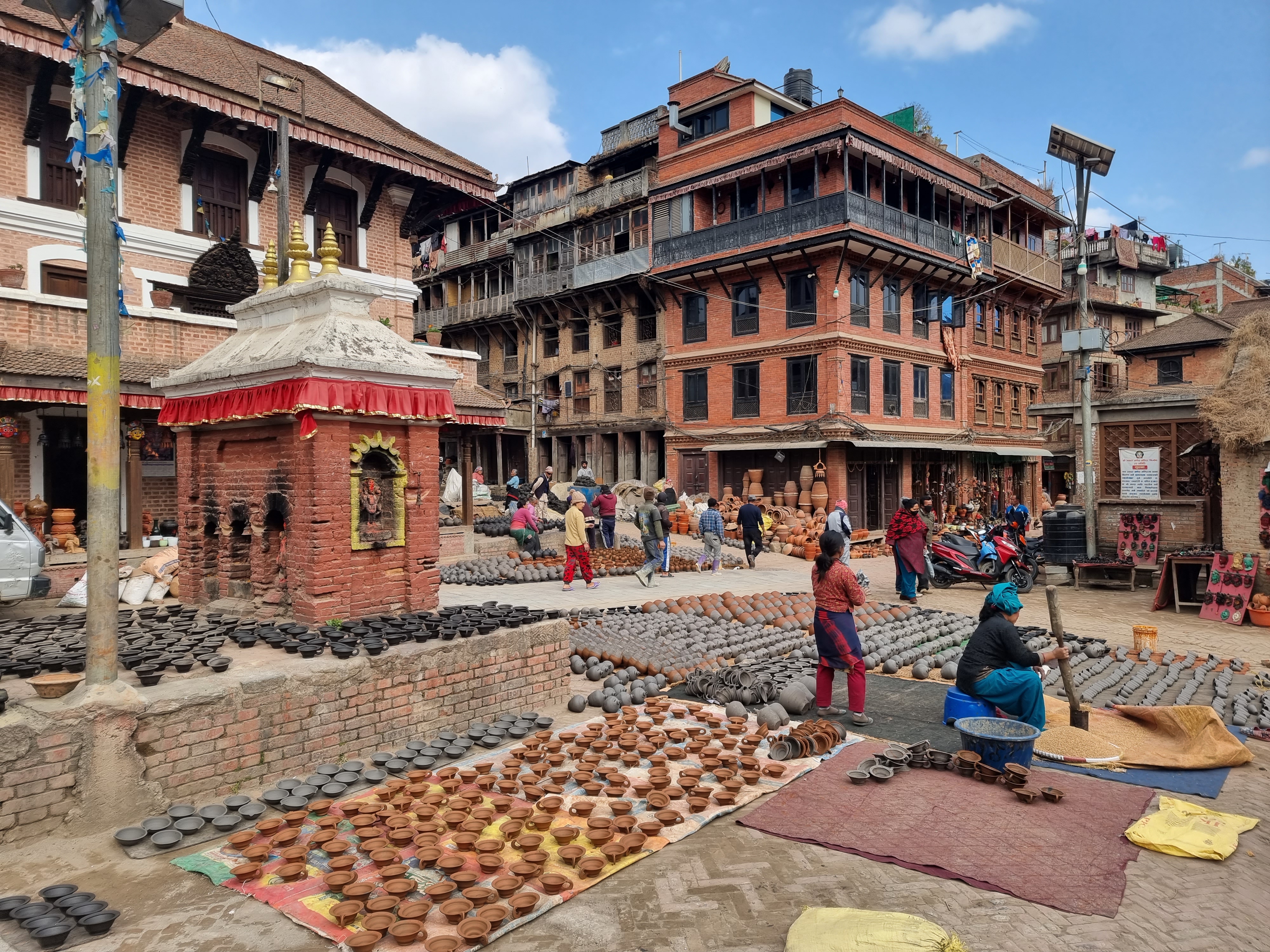
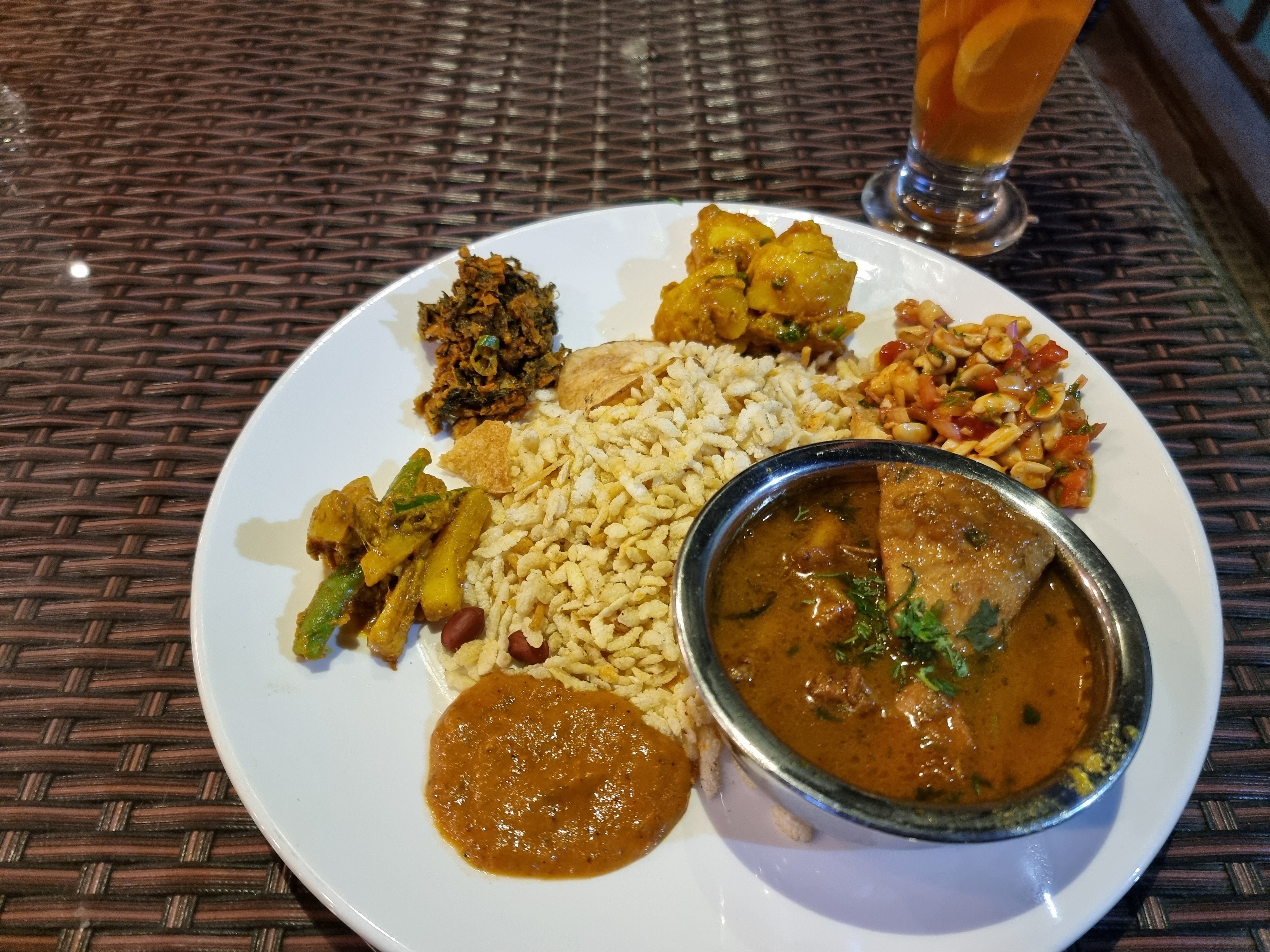
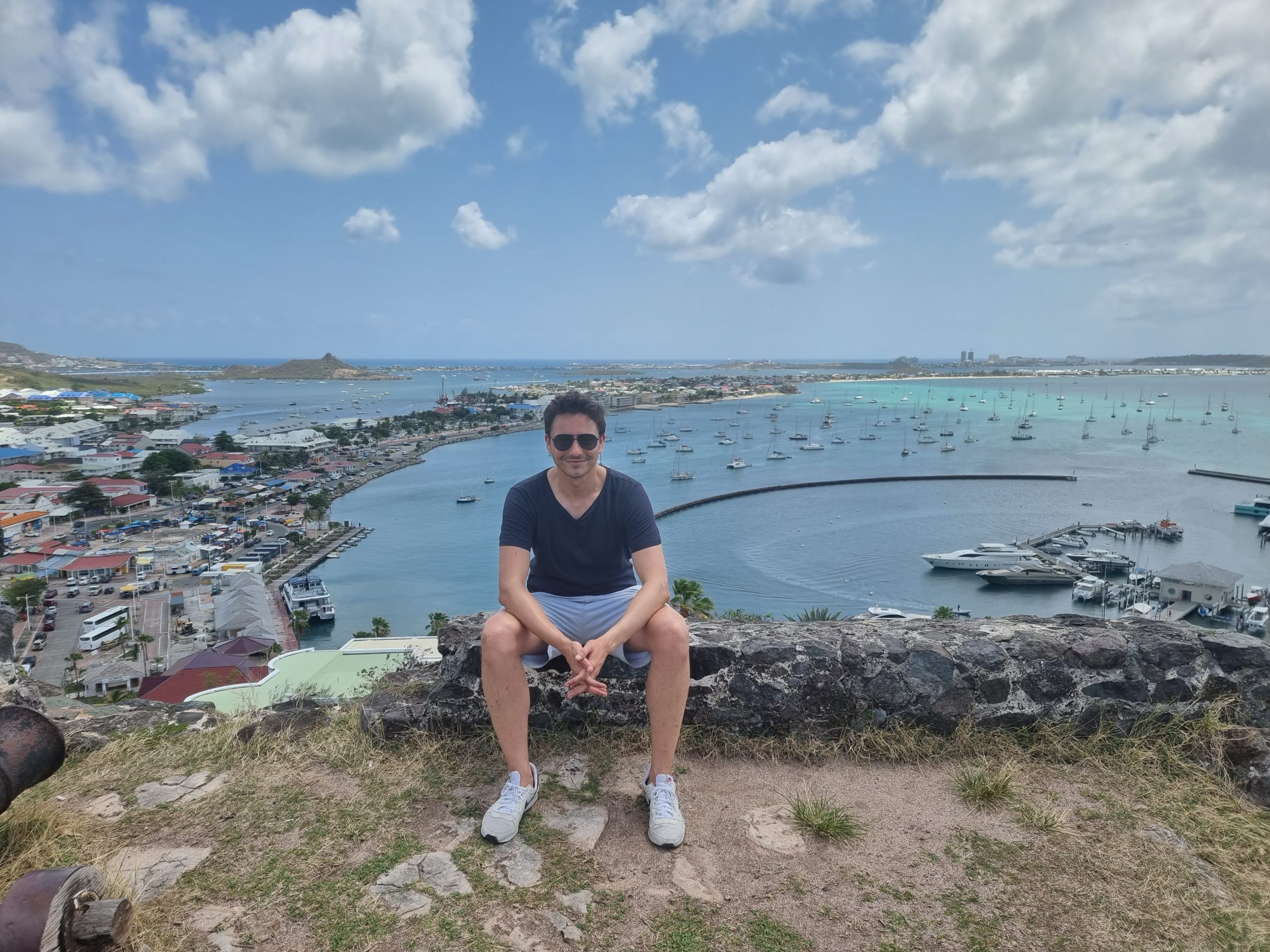
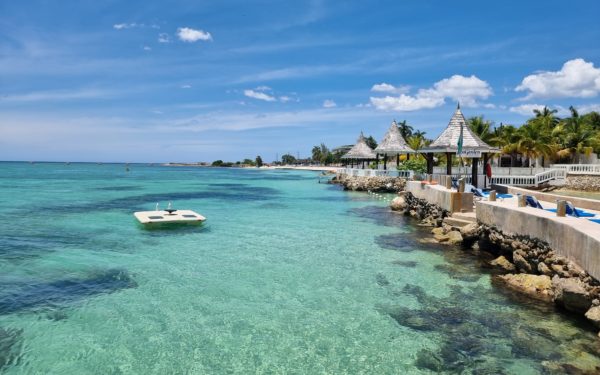


Very nice information about Nepal trip
Nicely presented with simple language. Thank you.